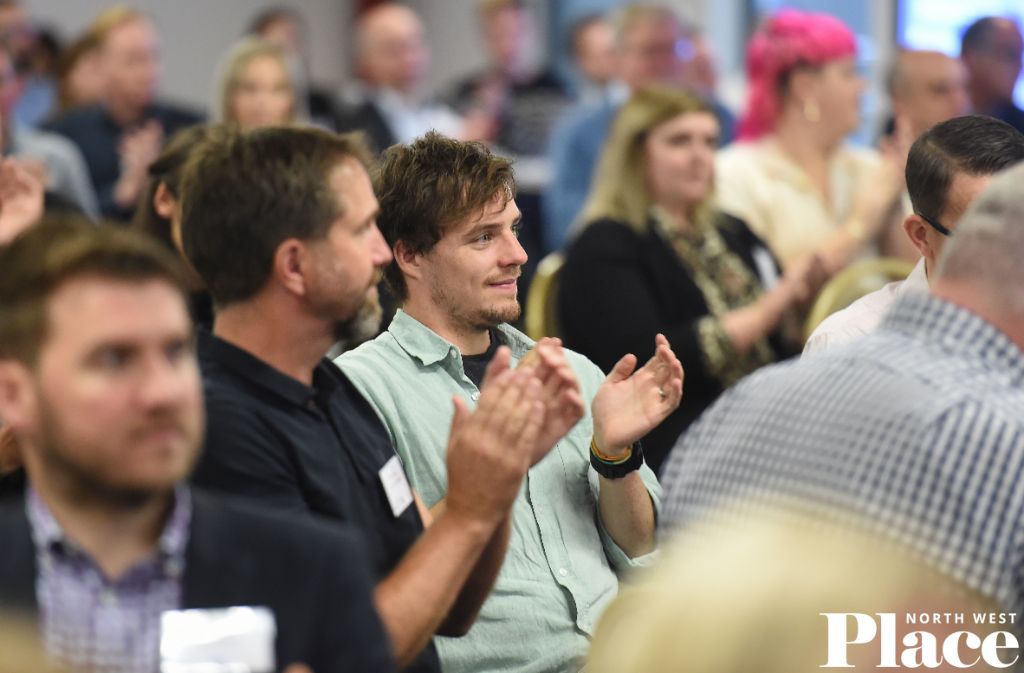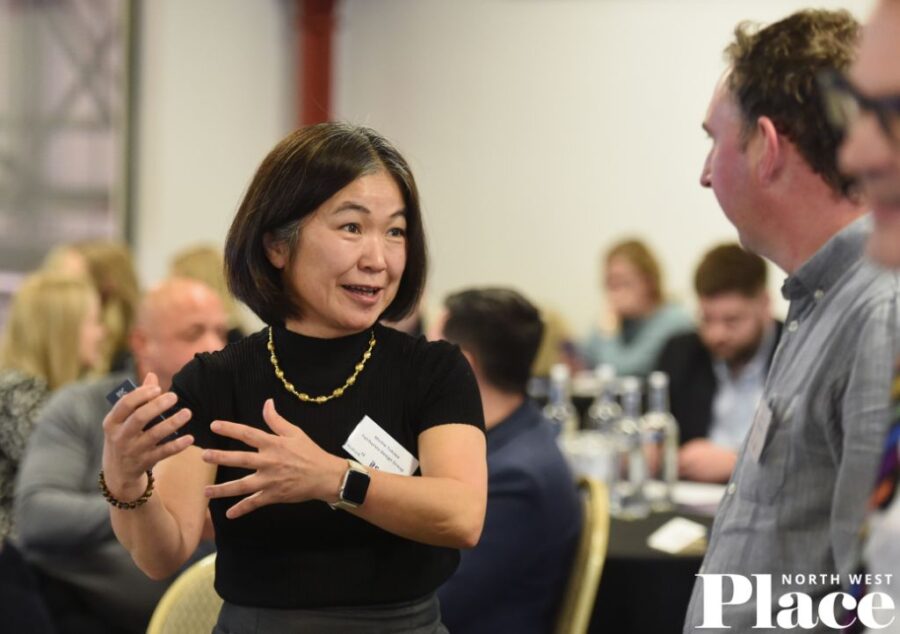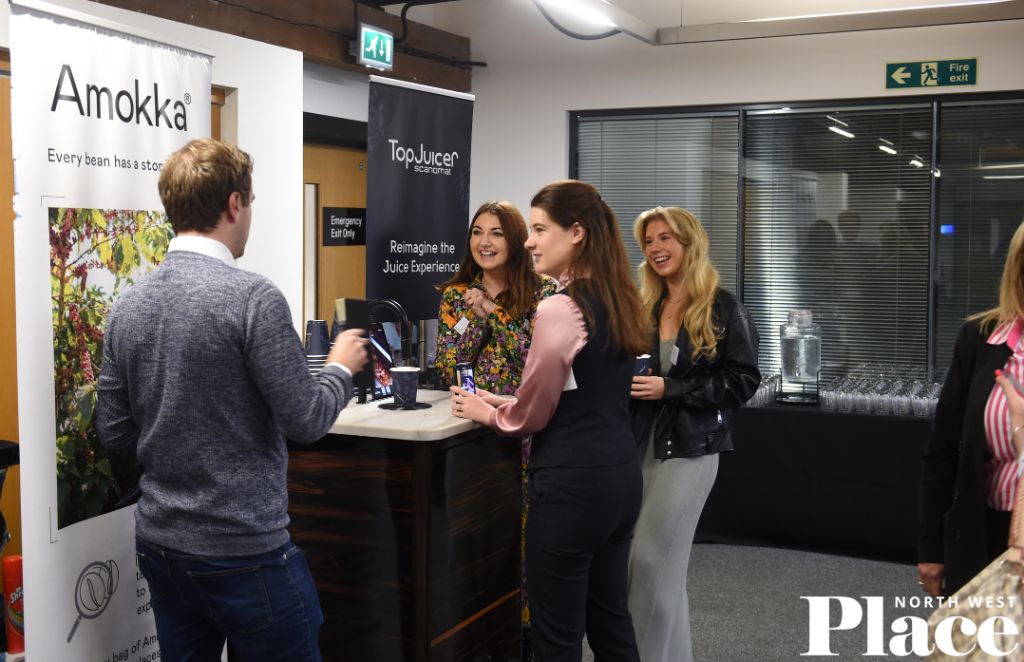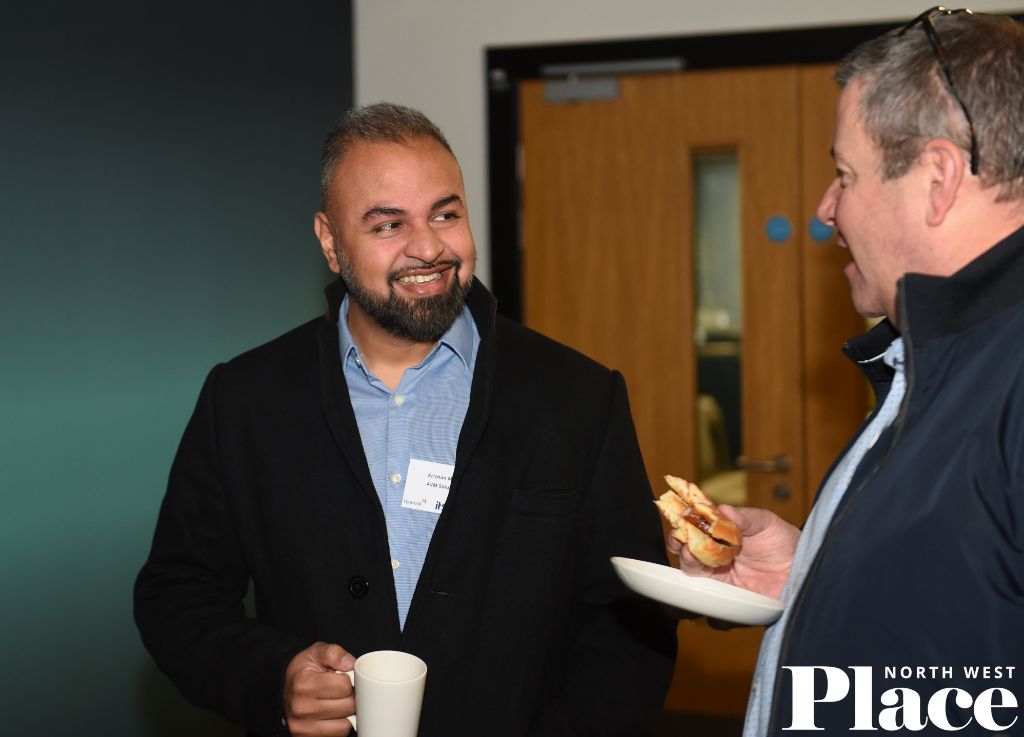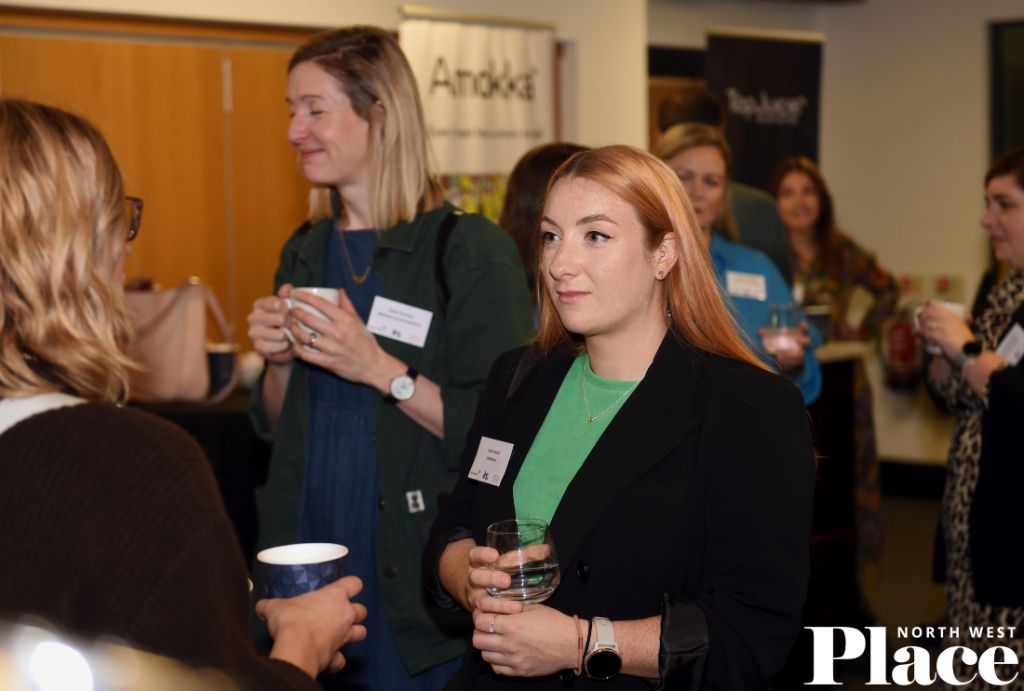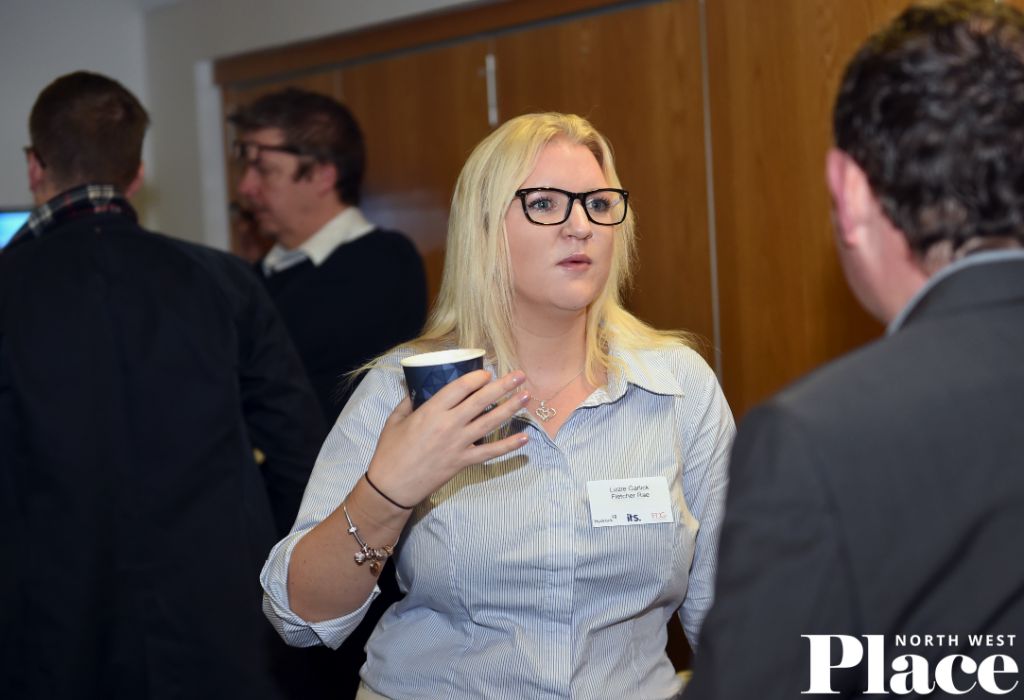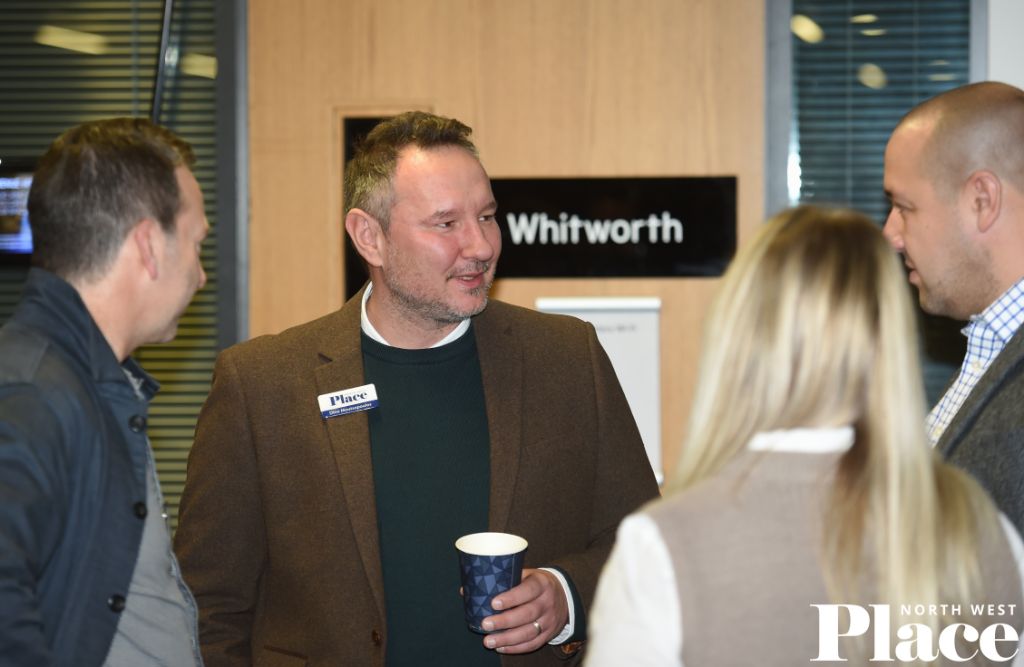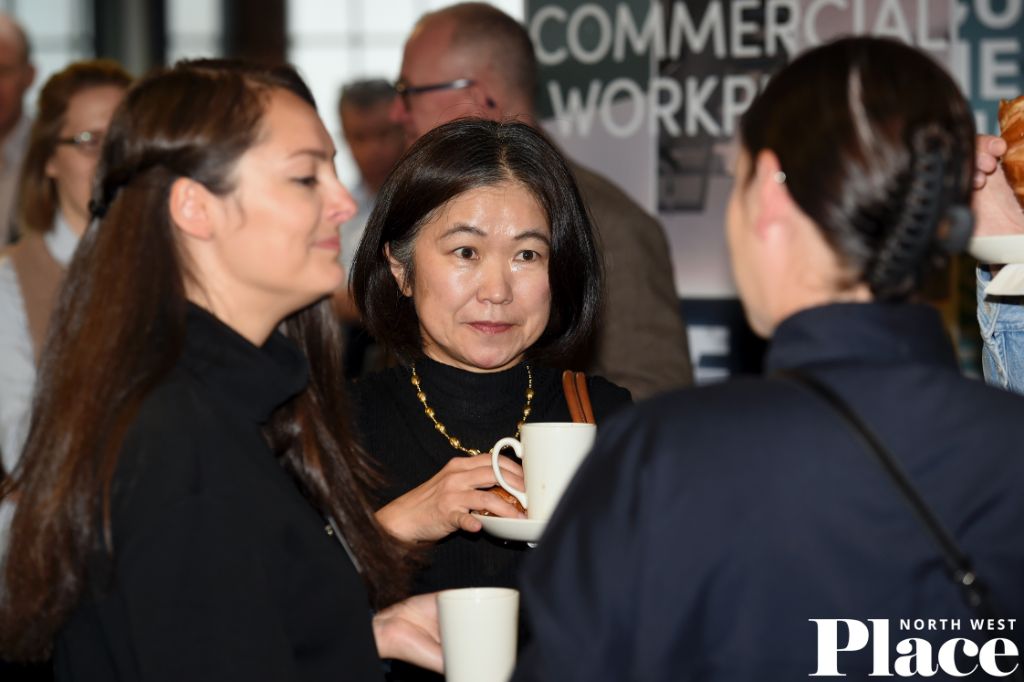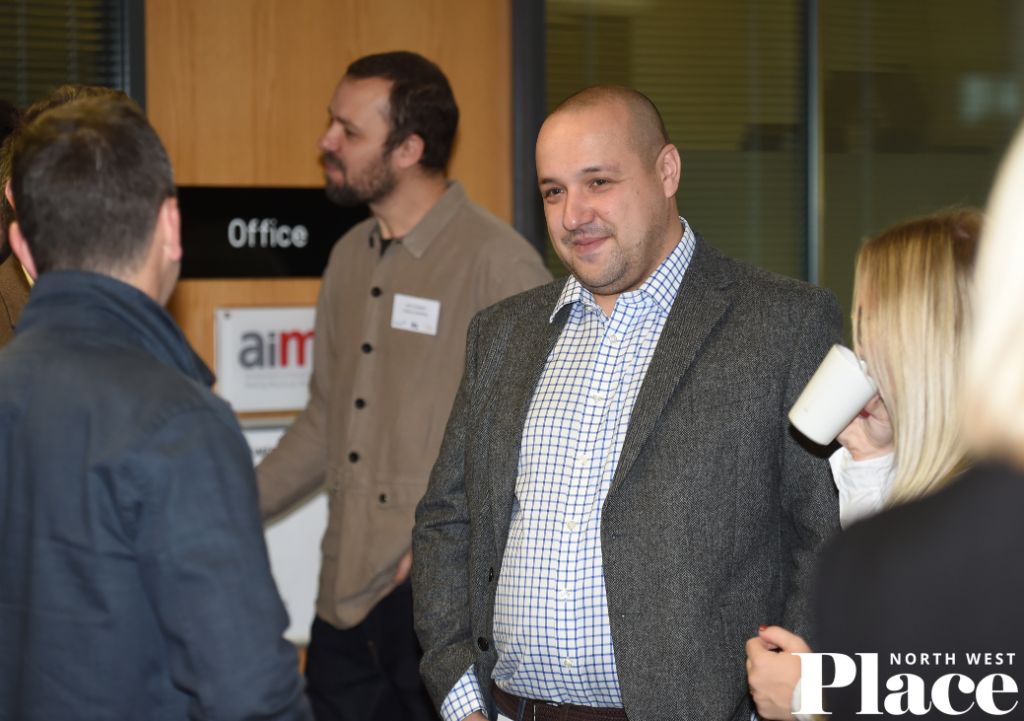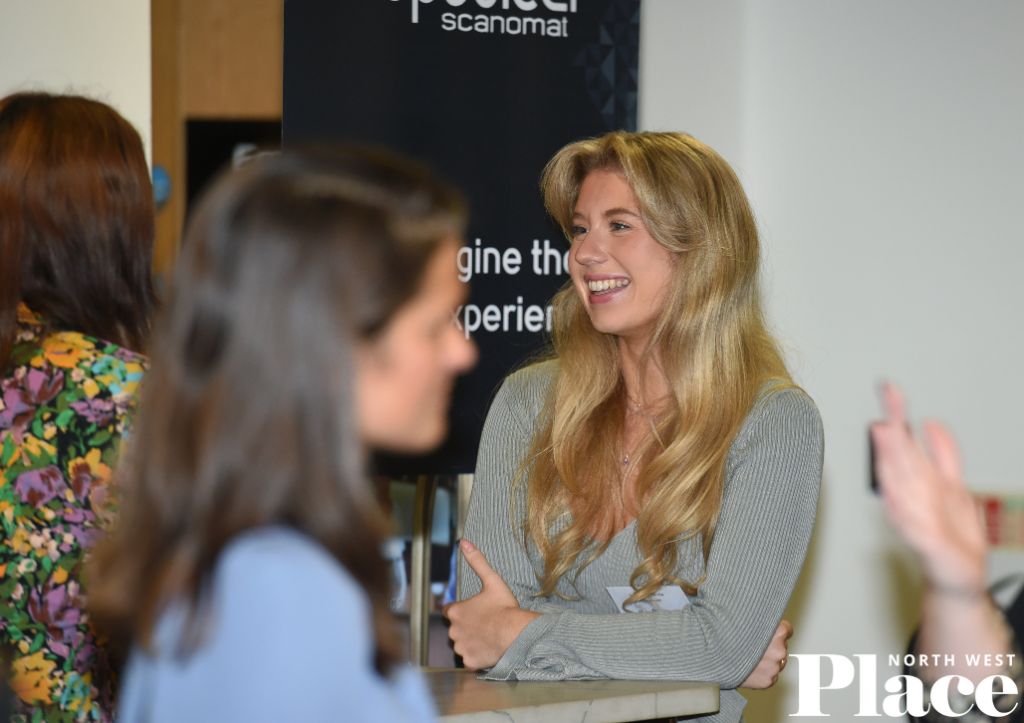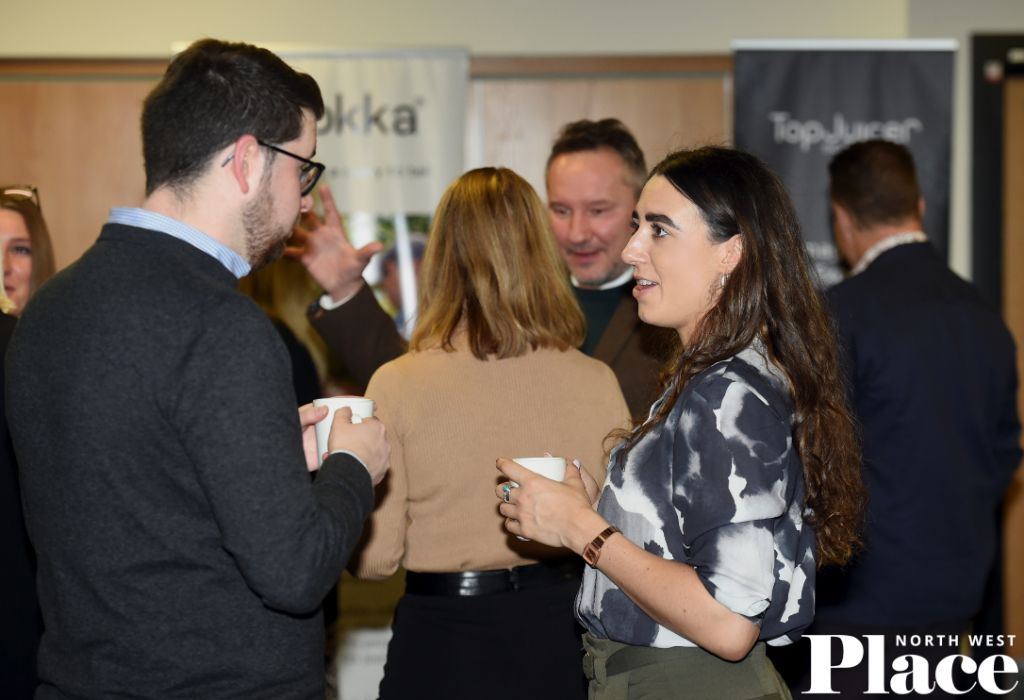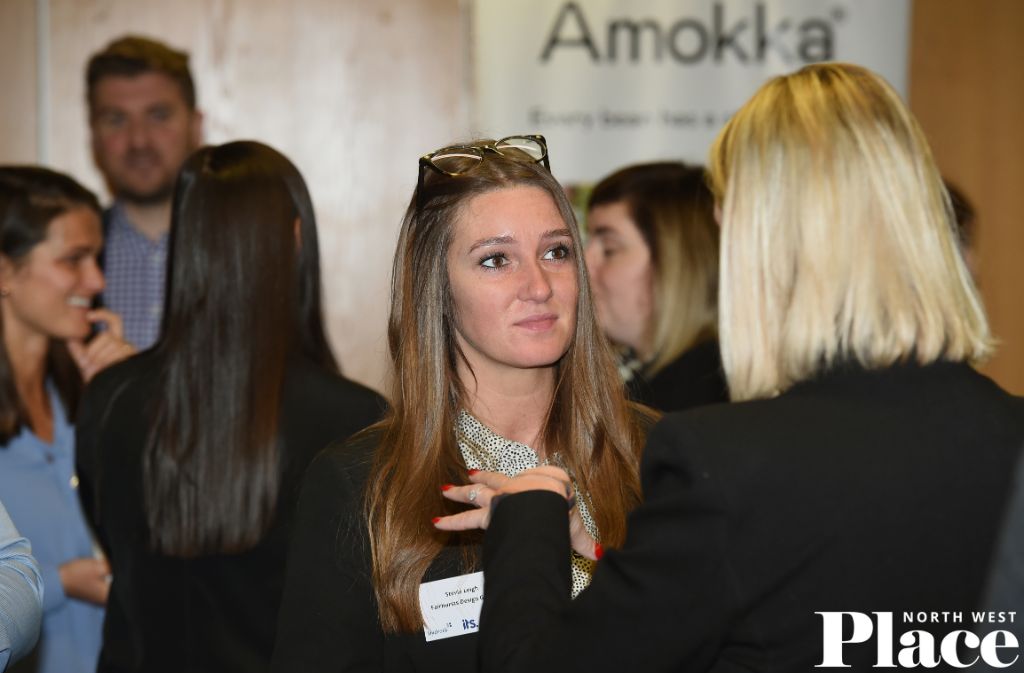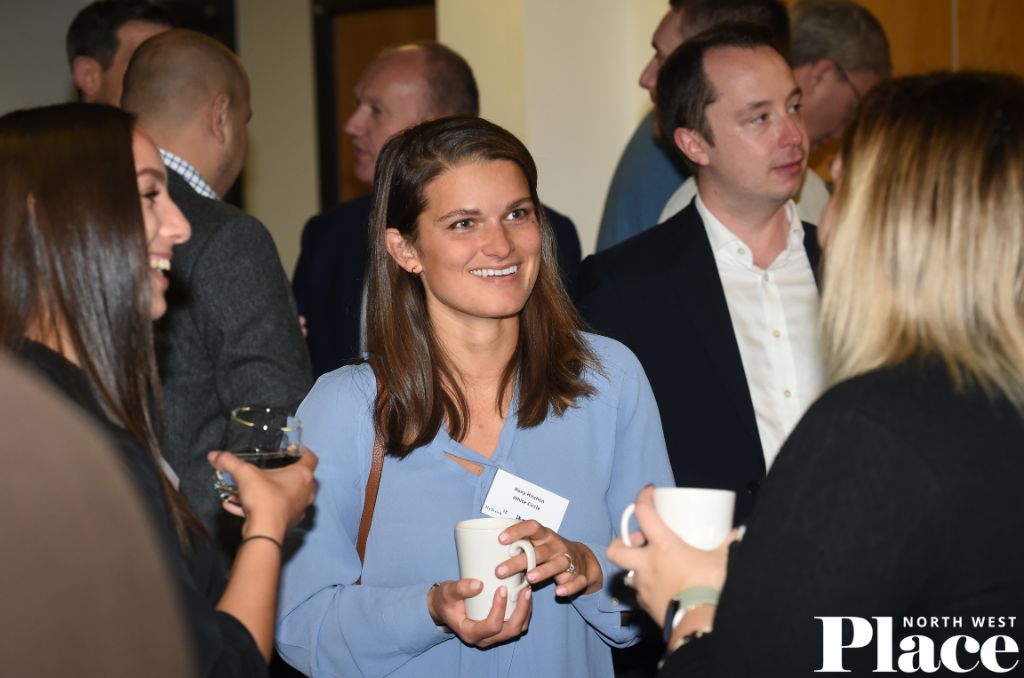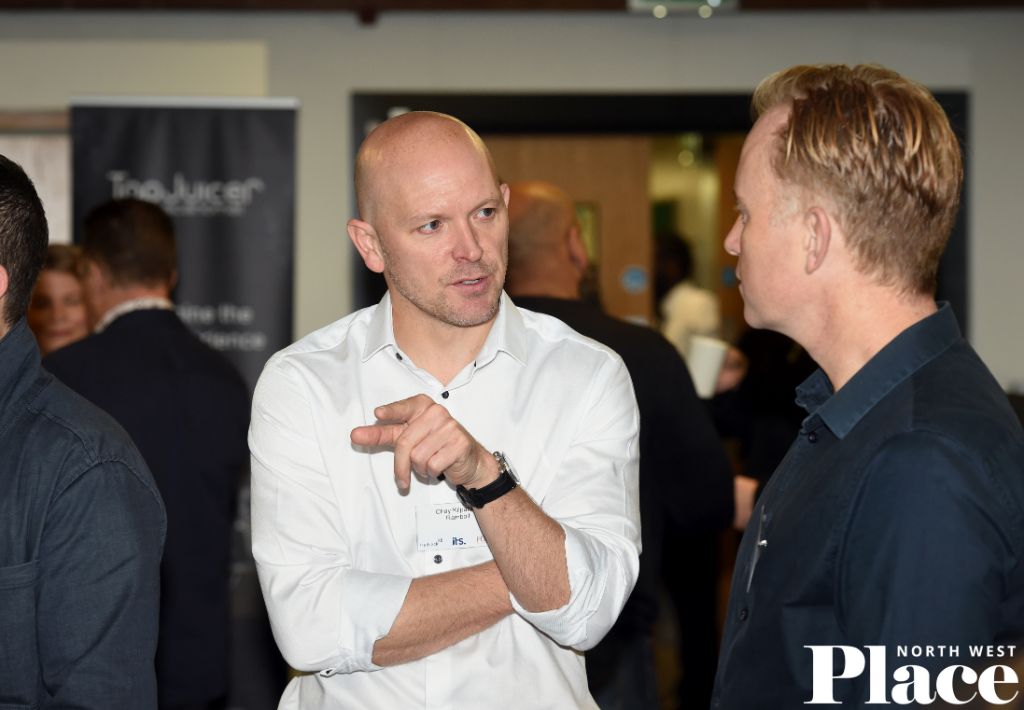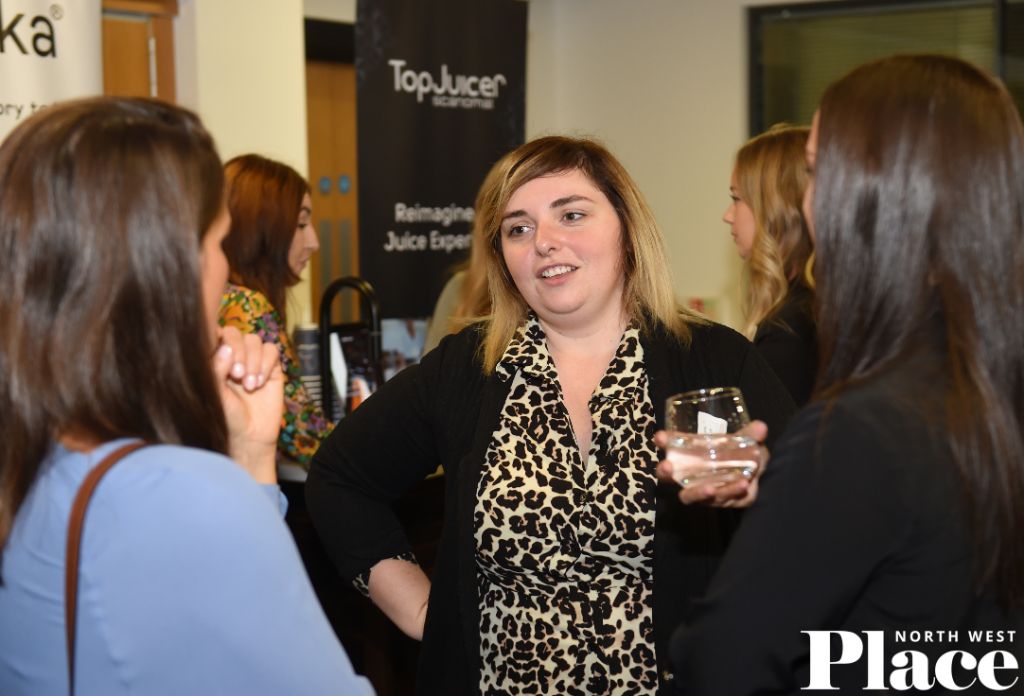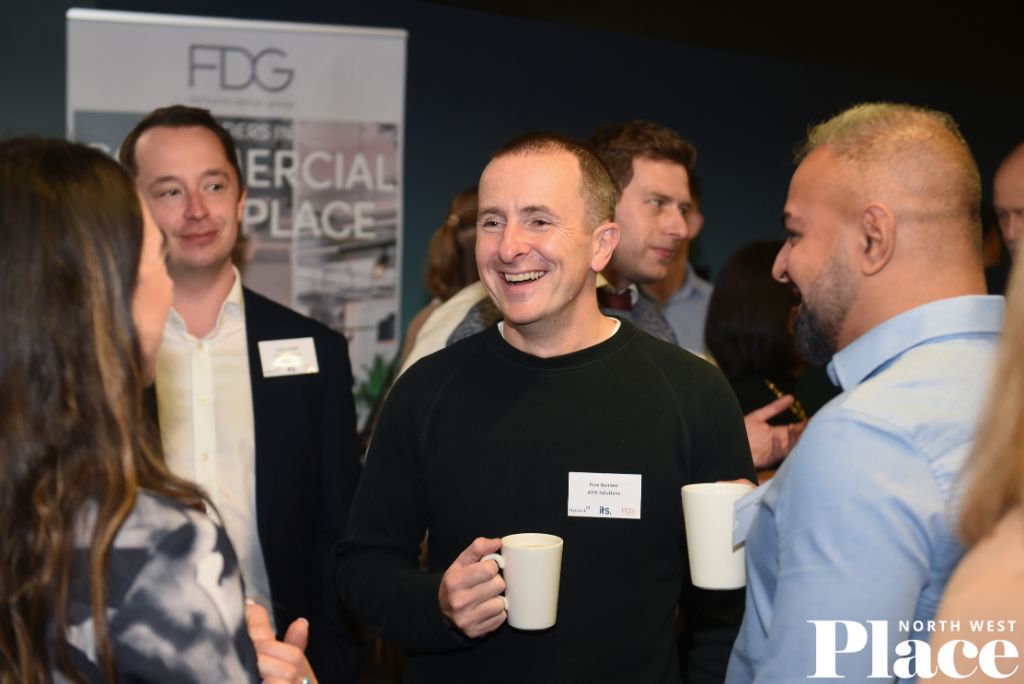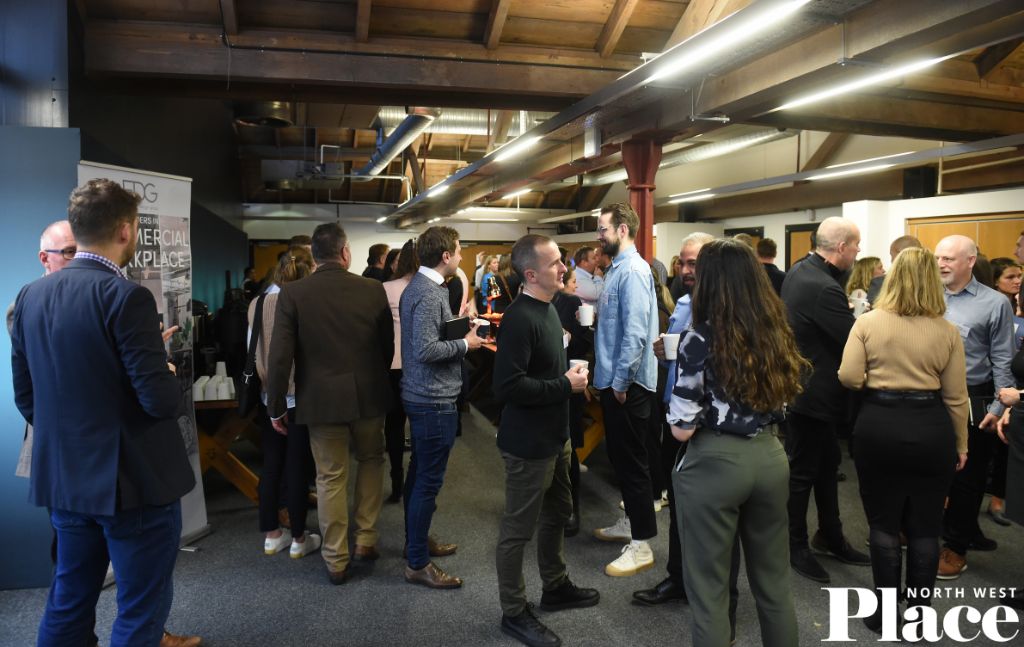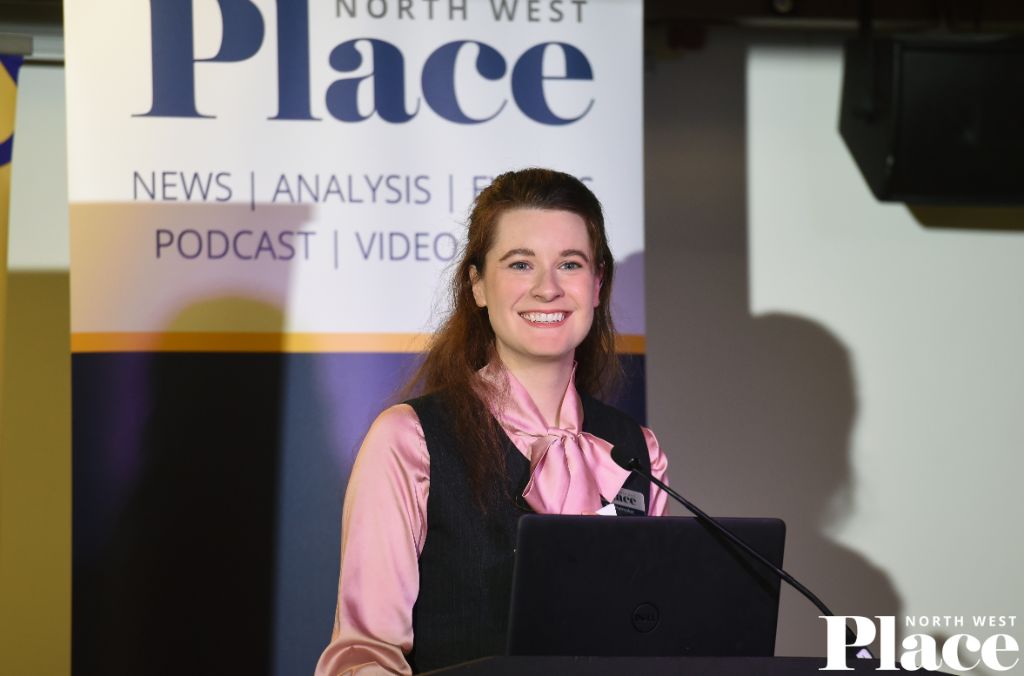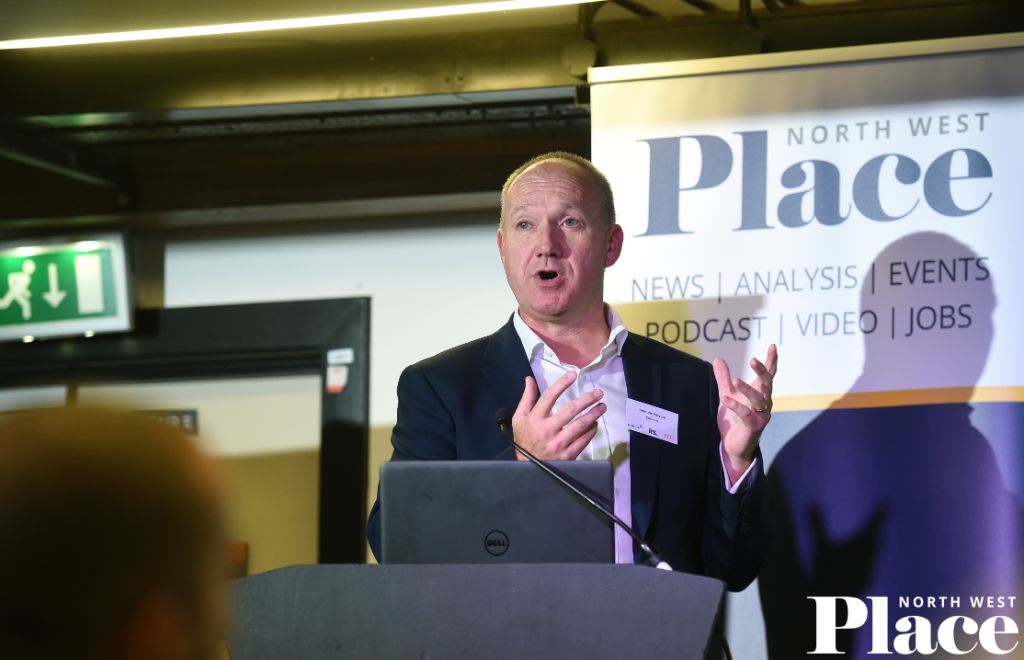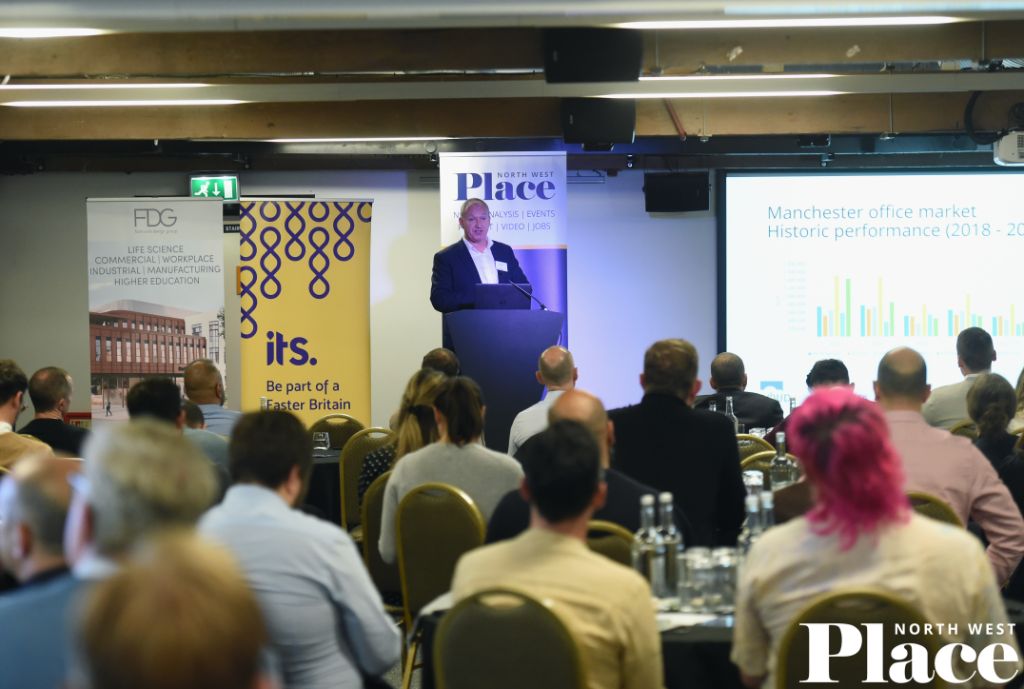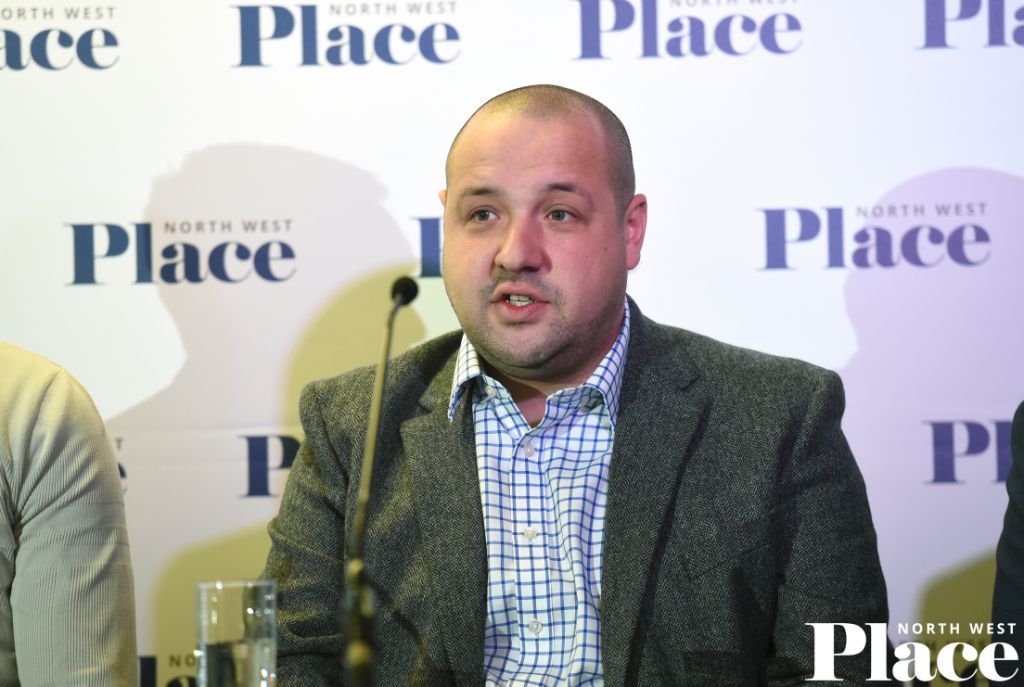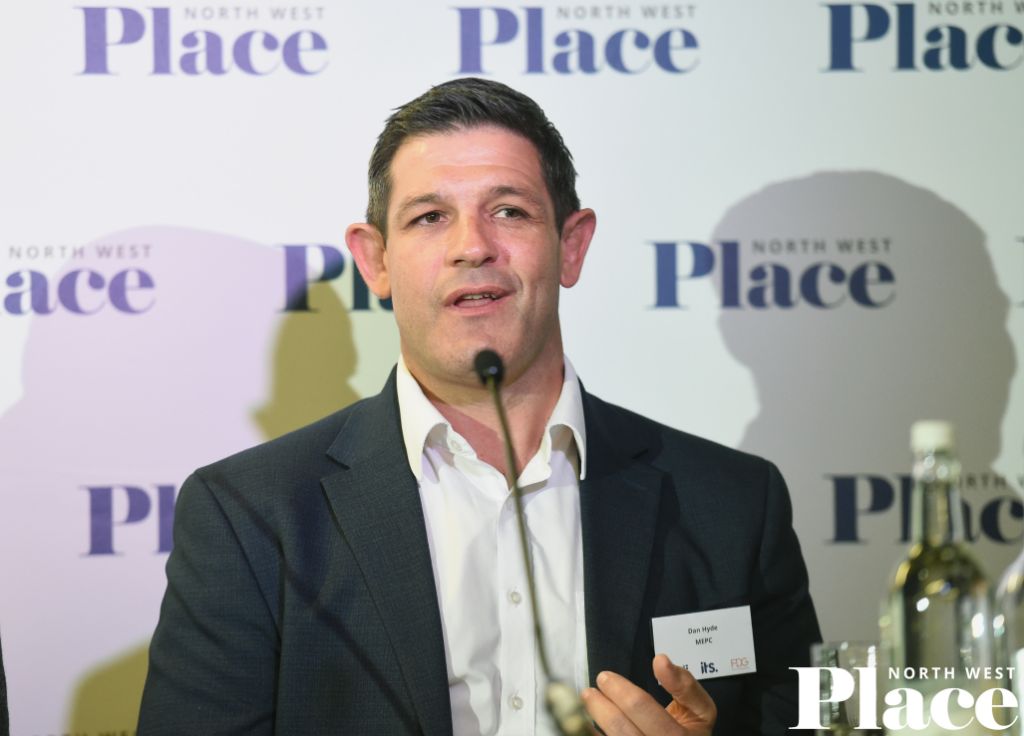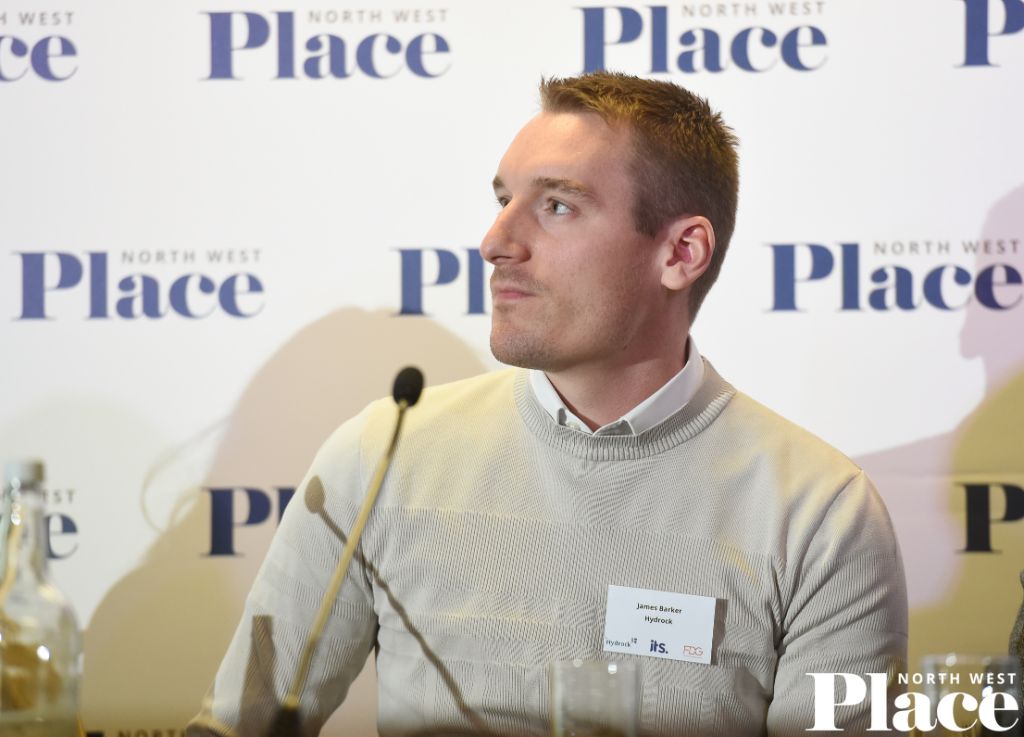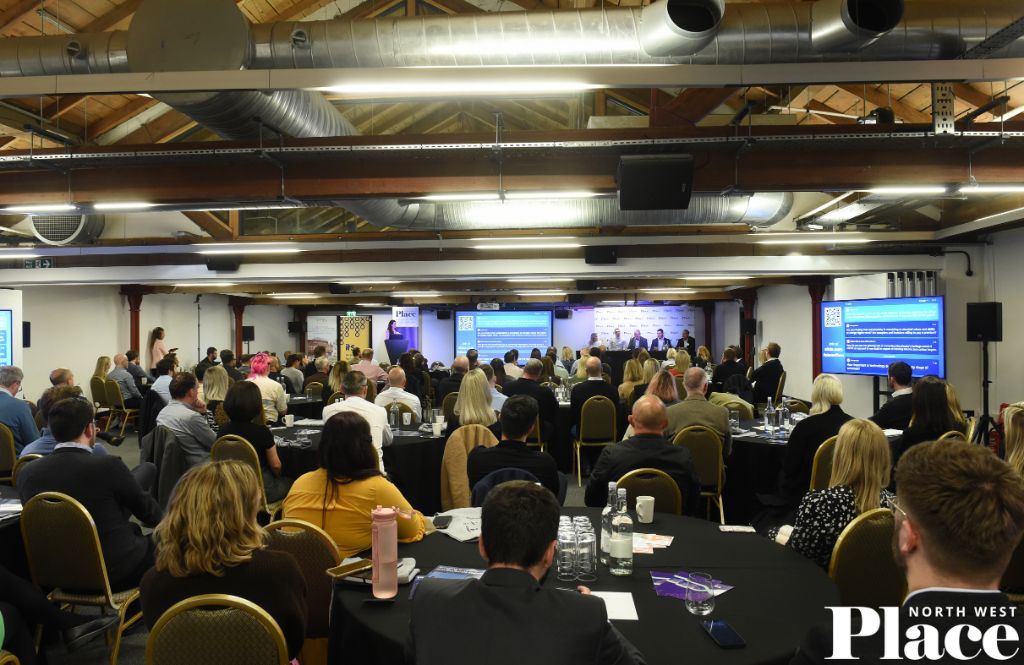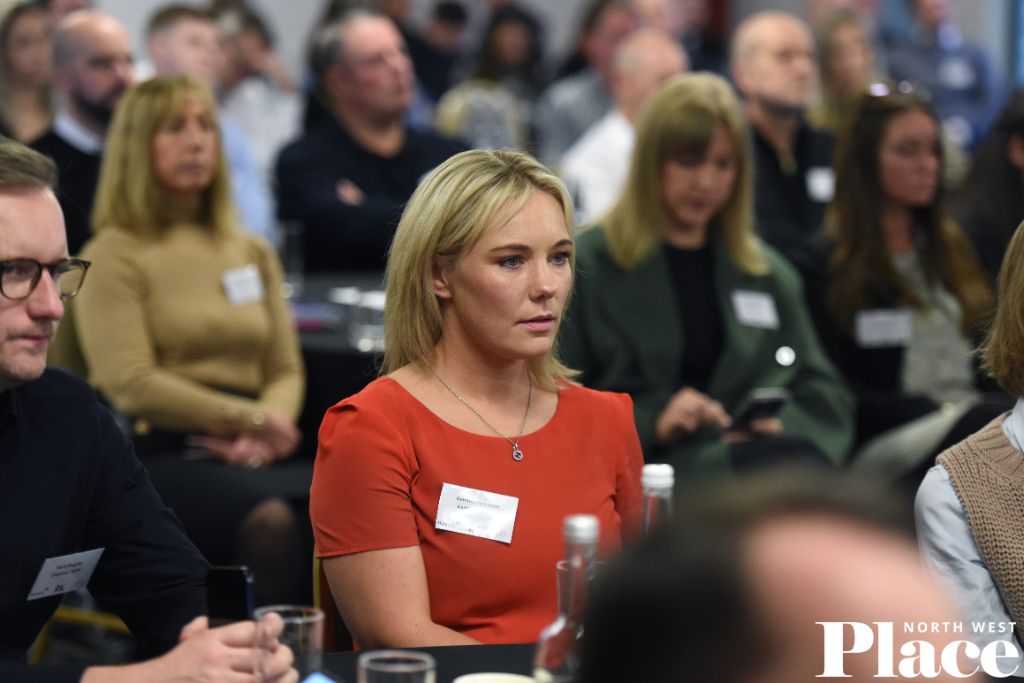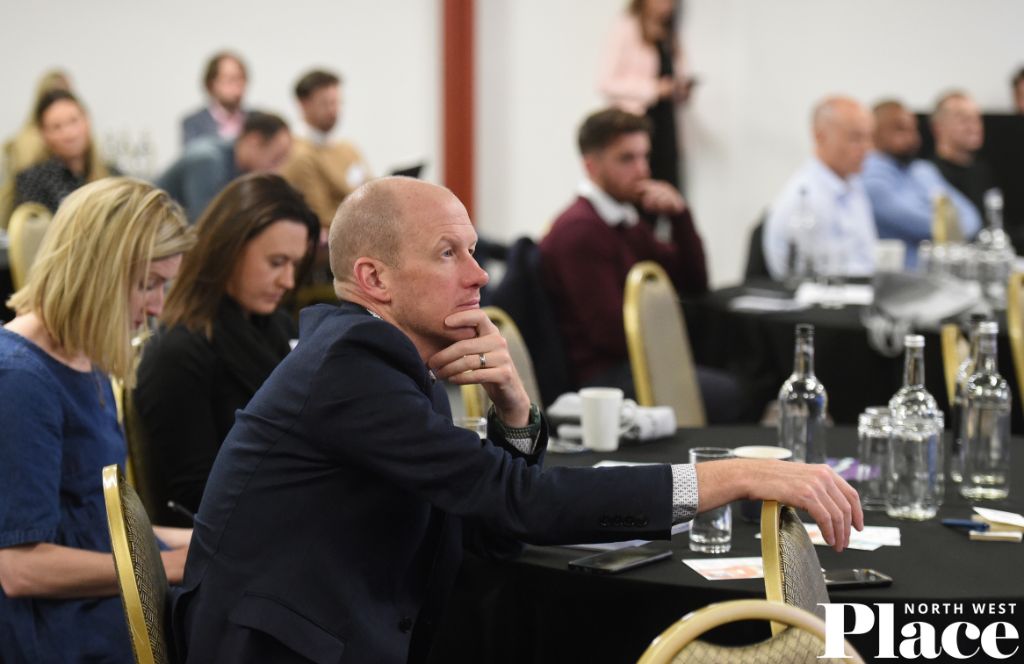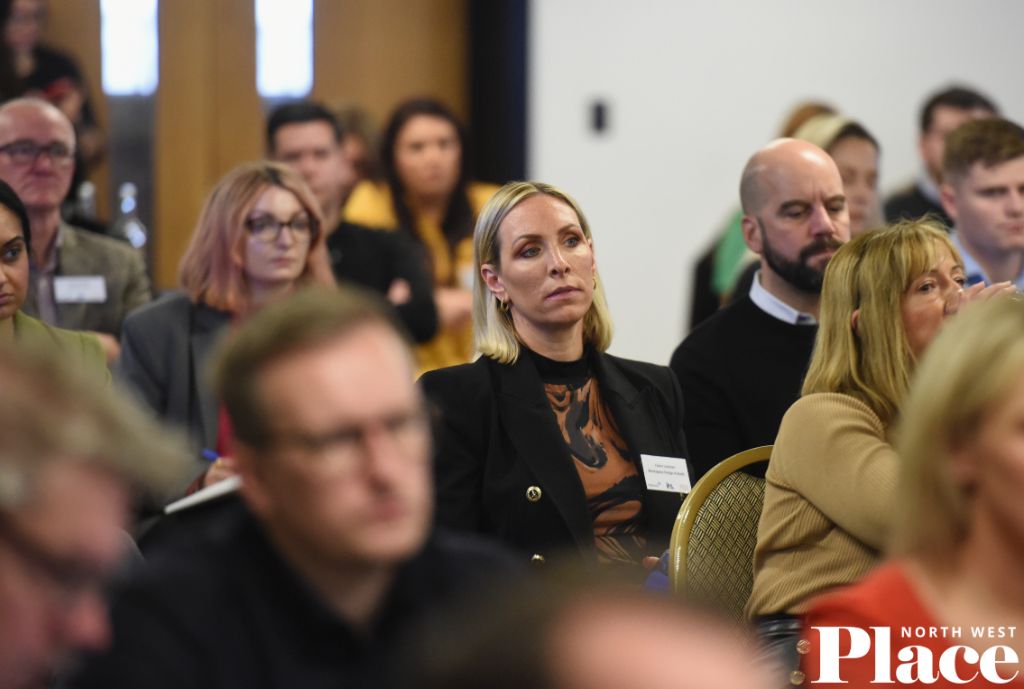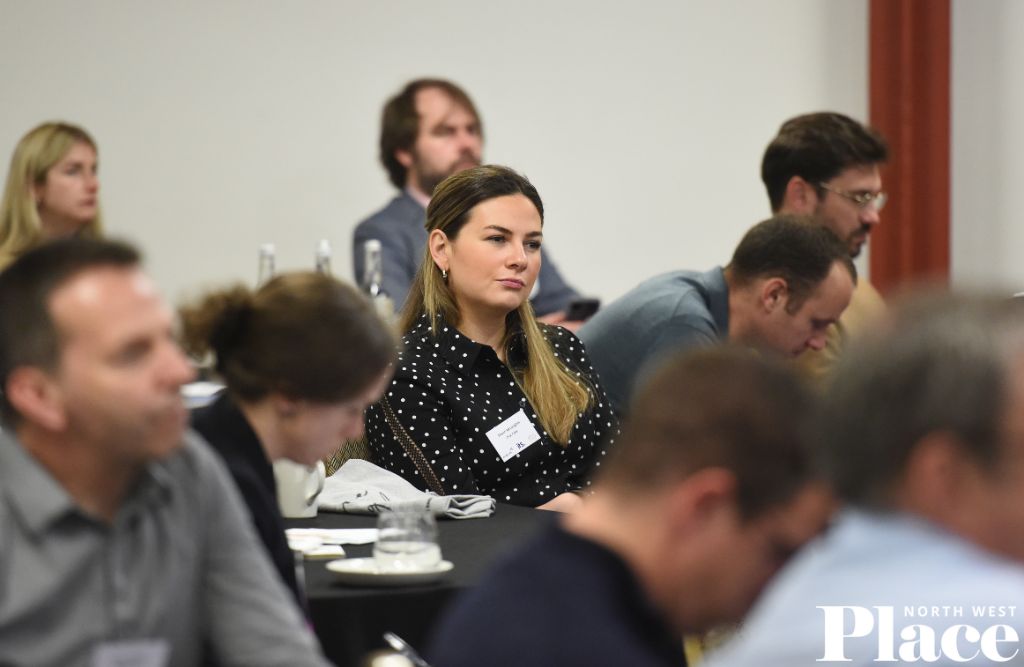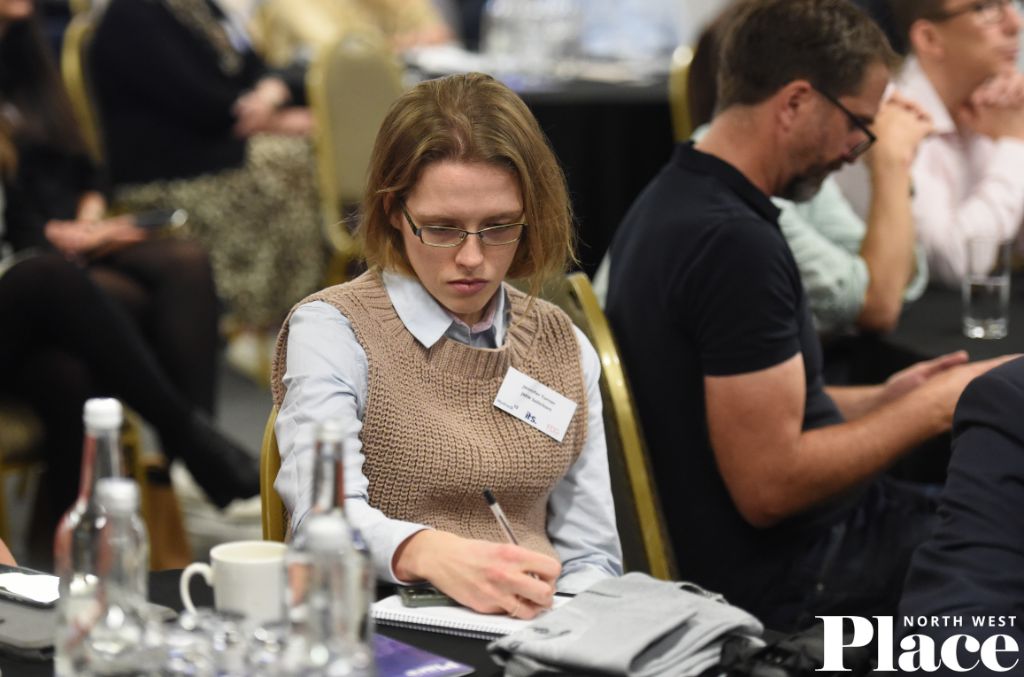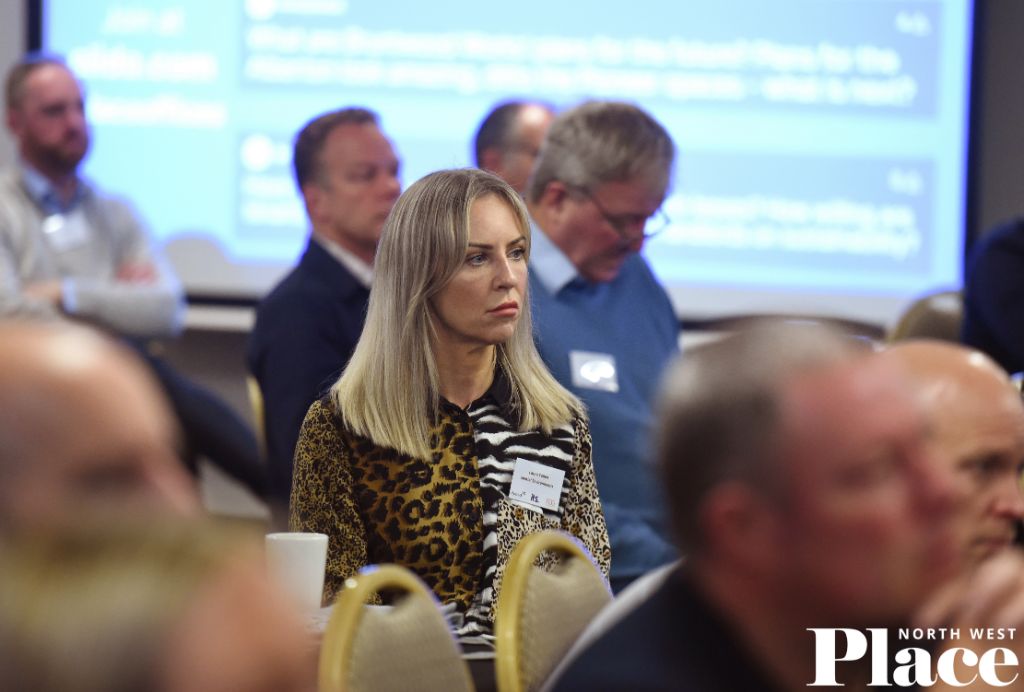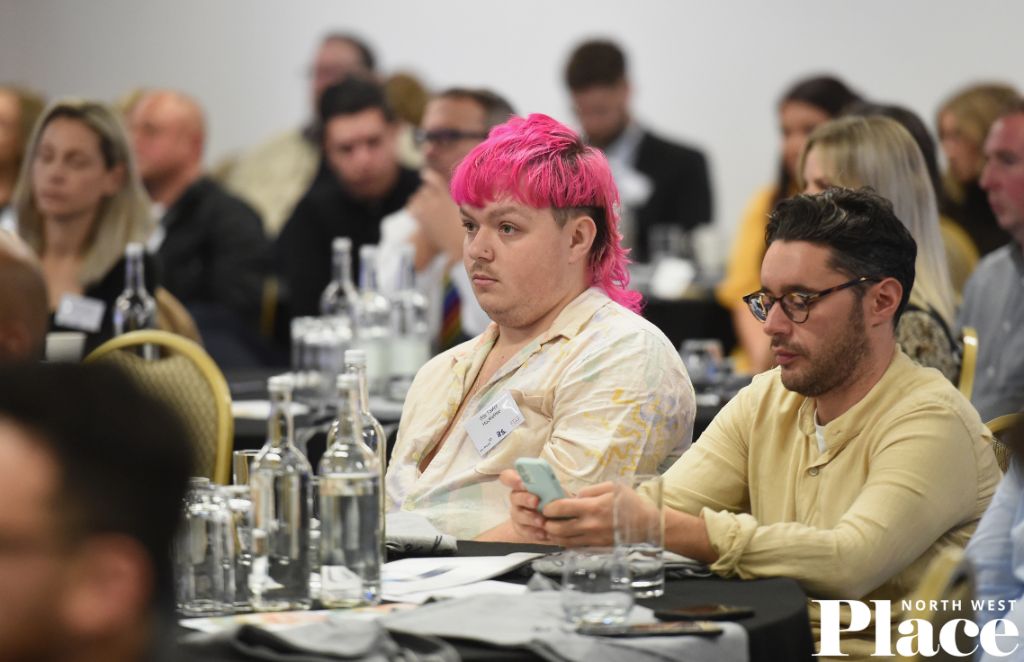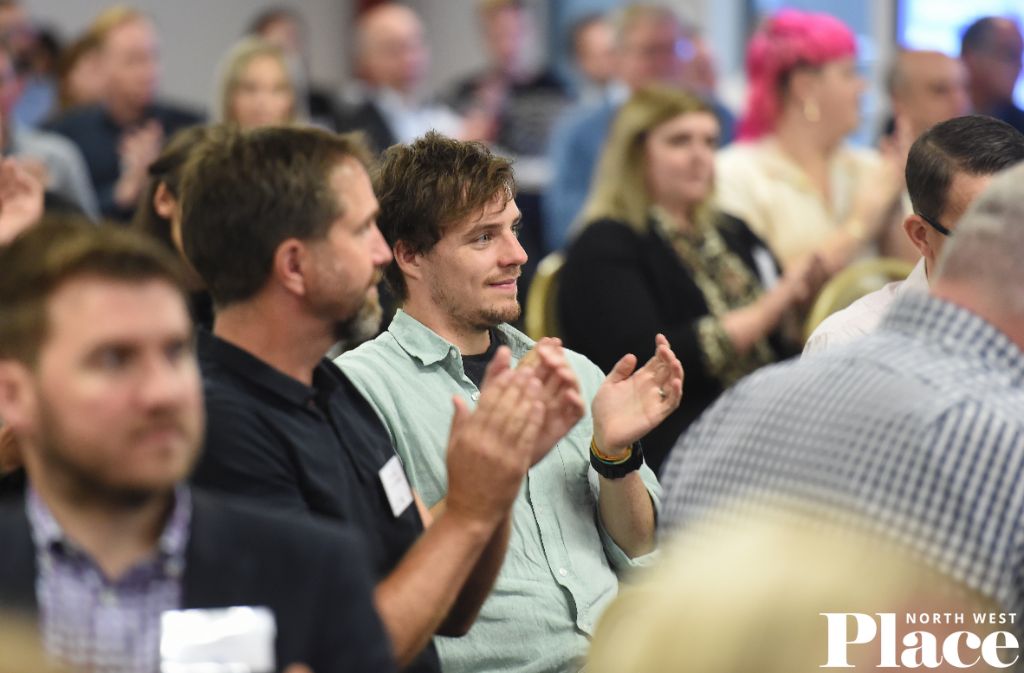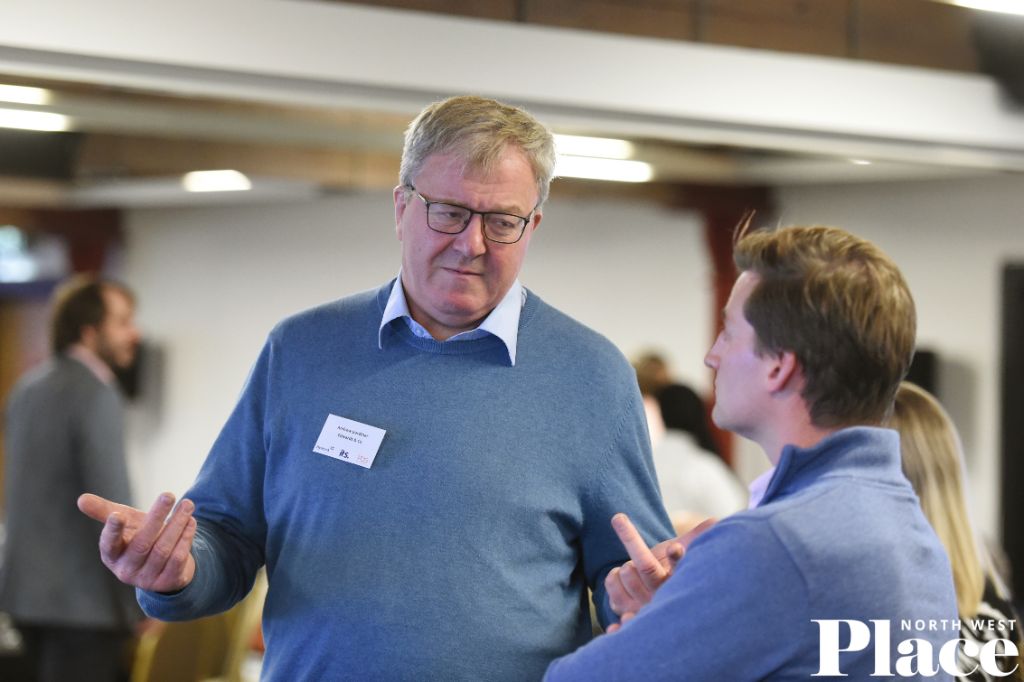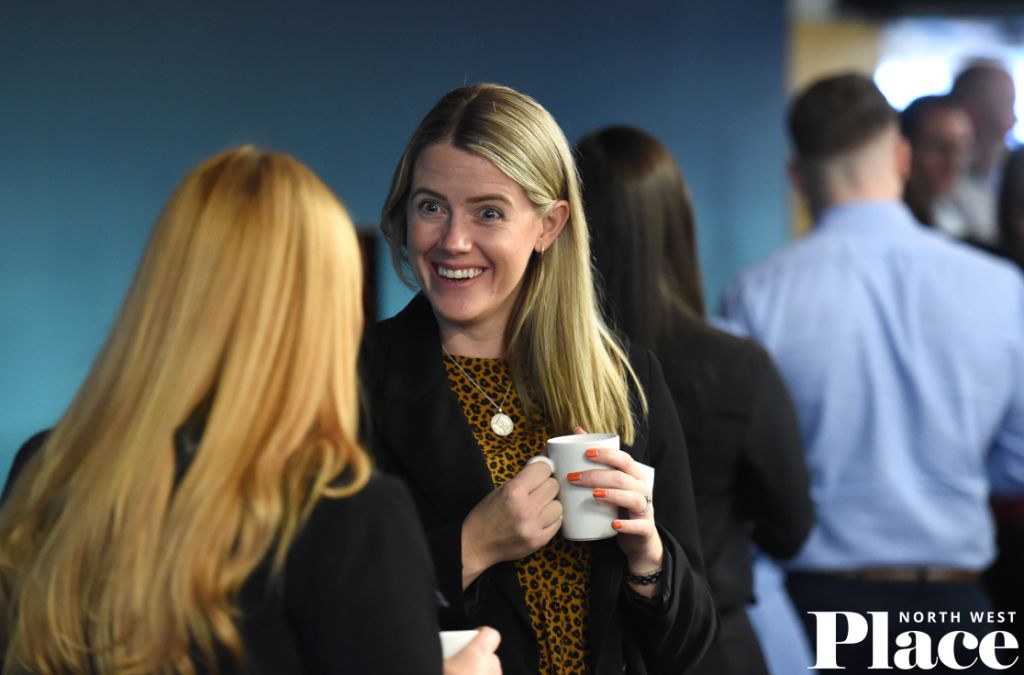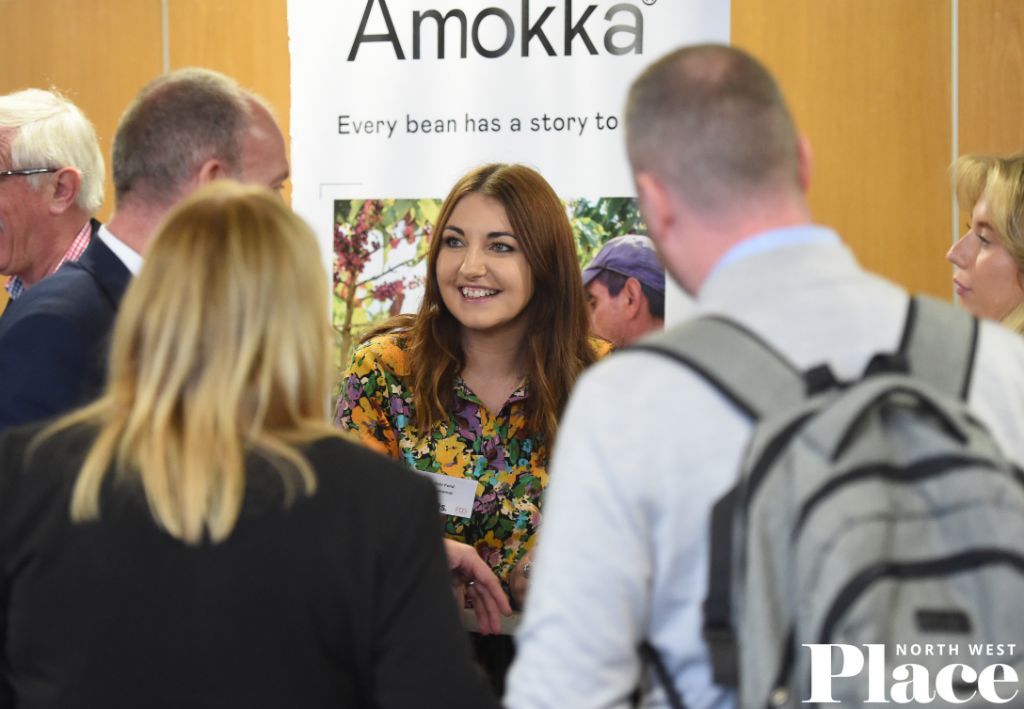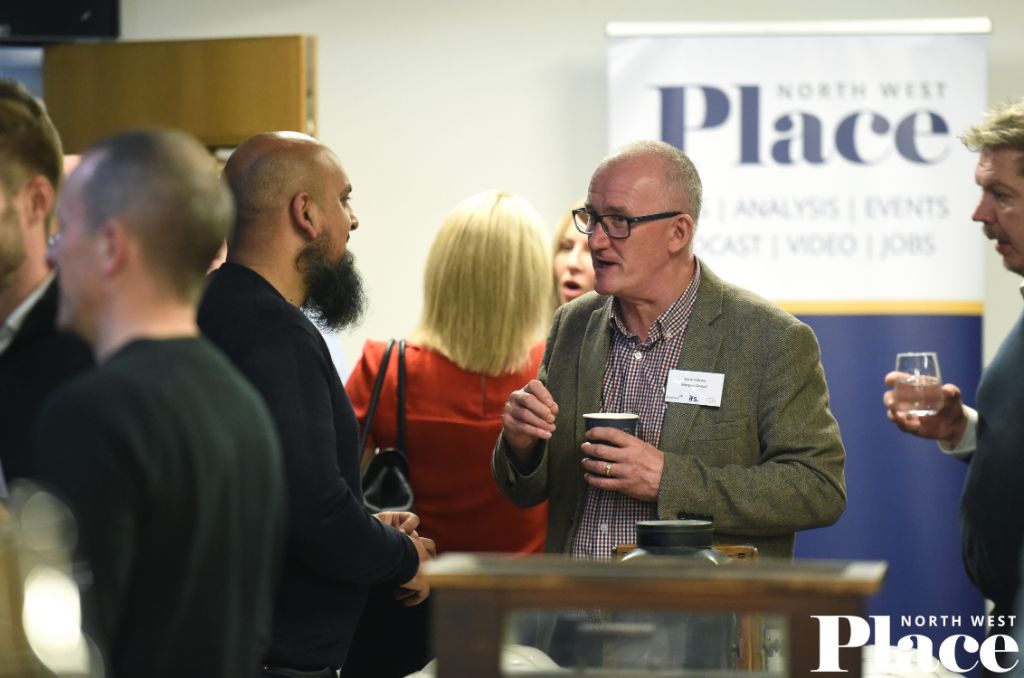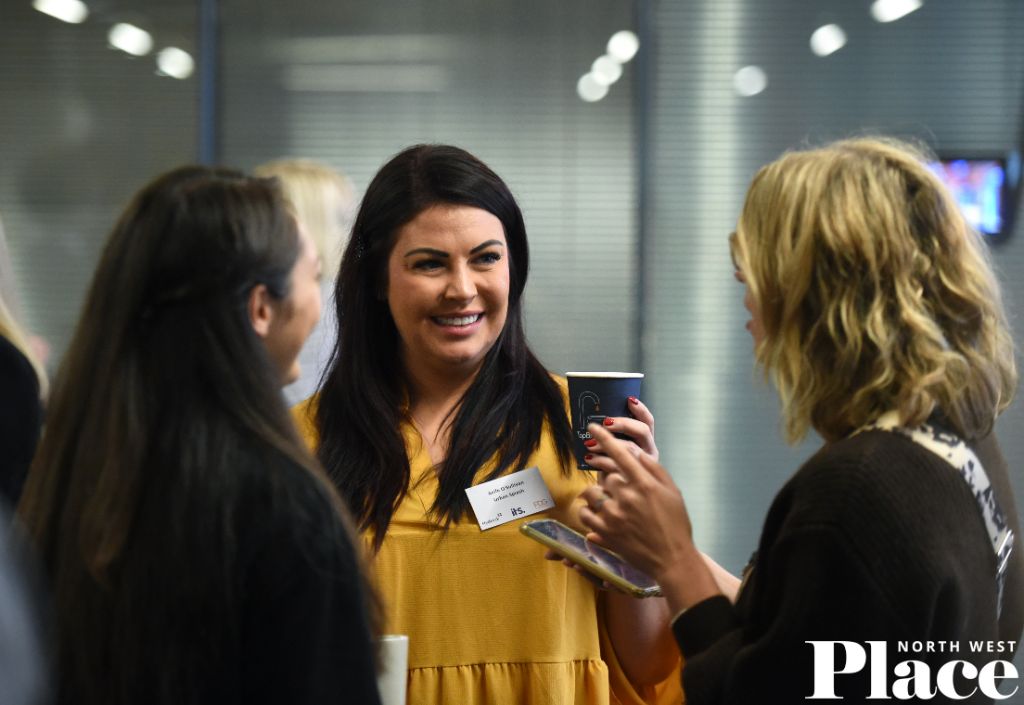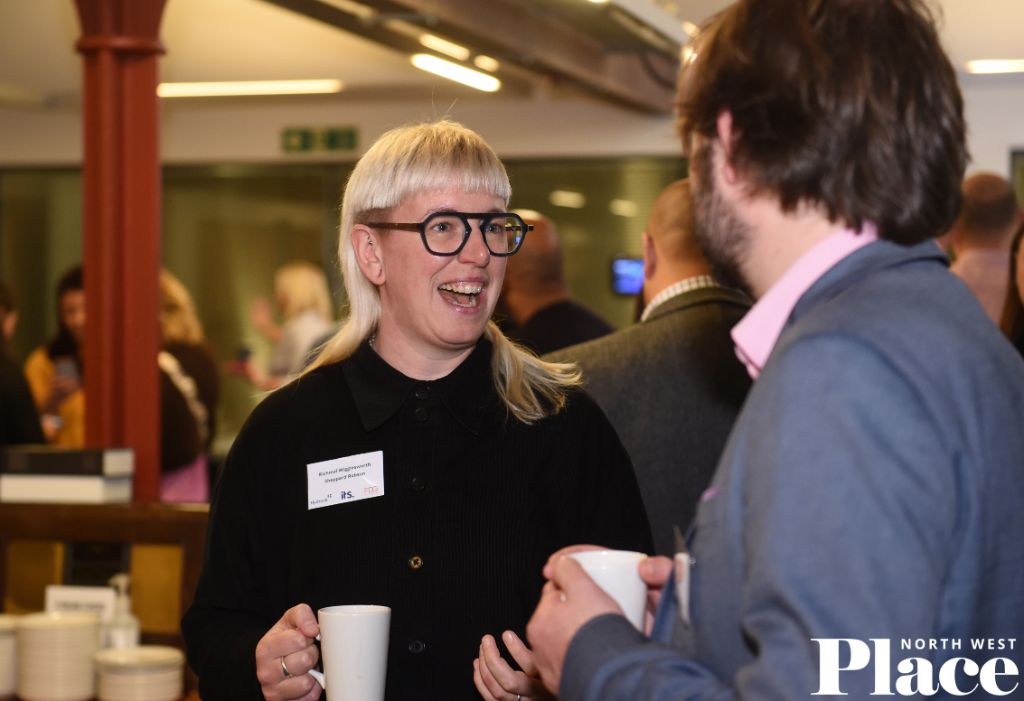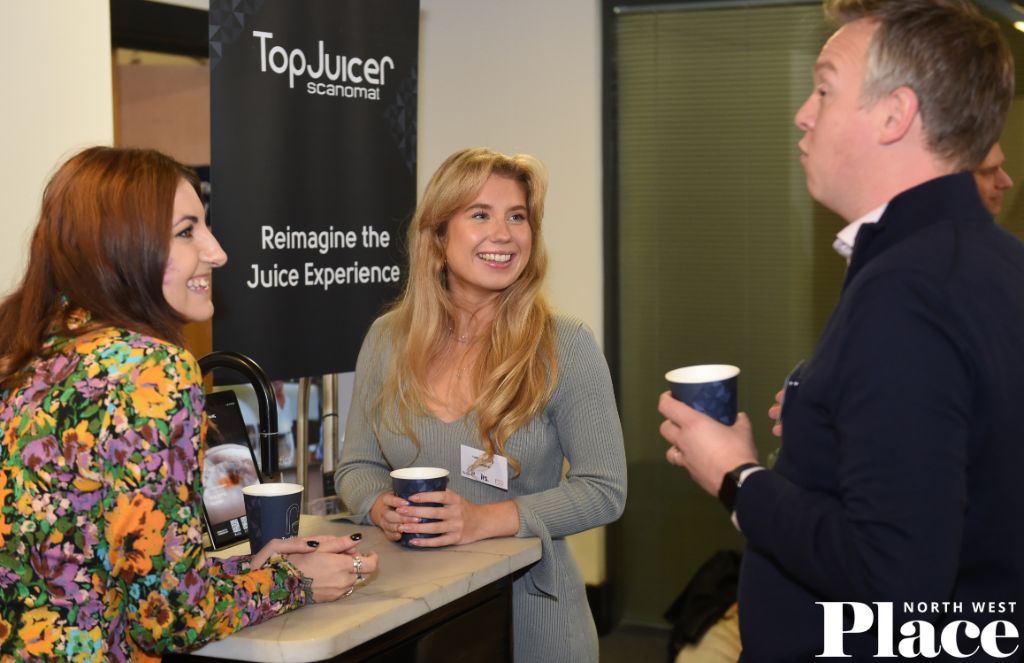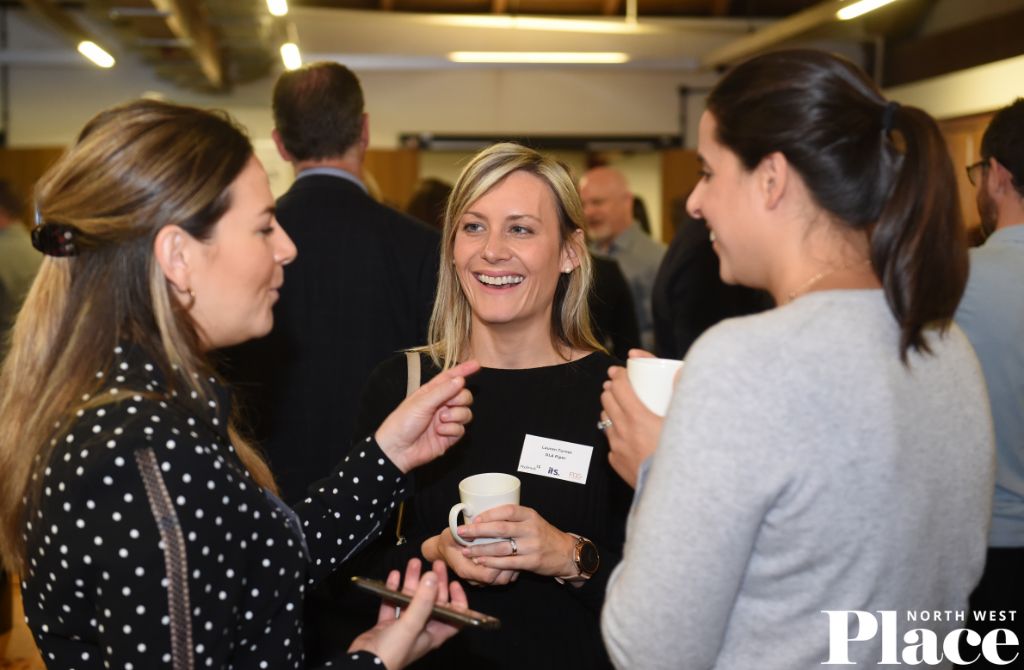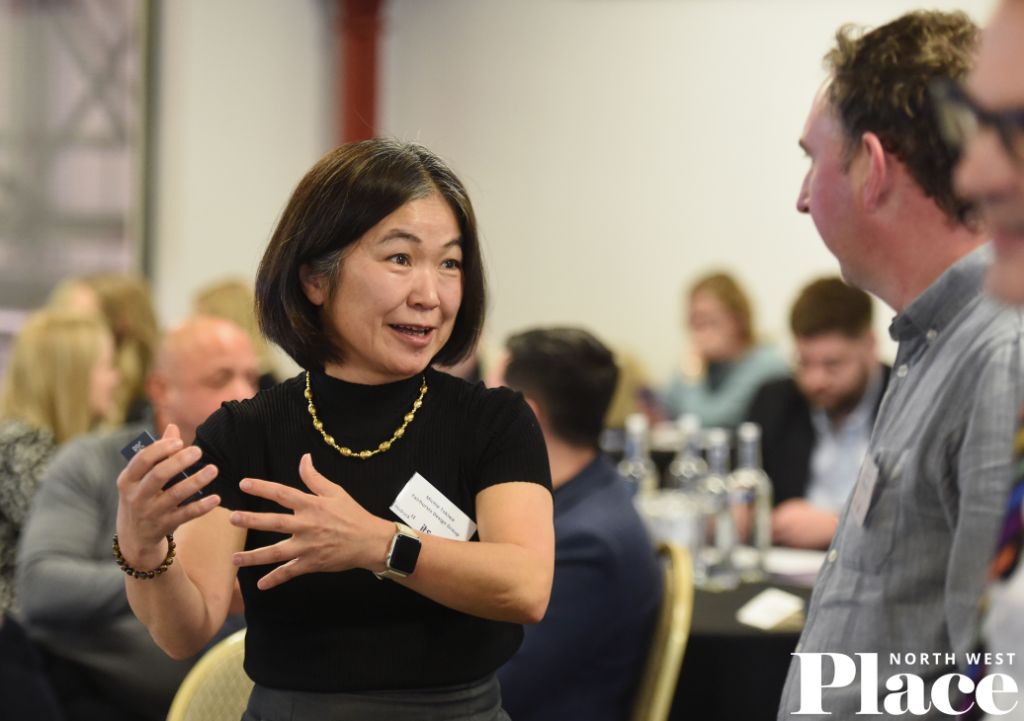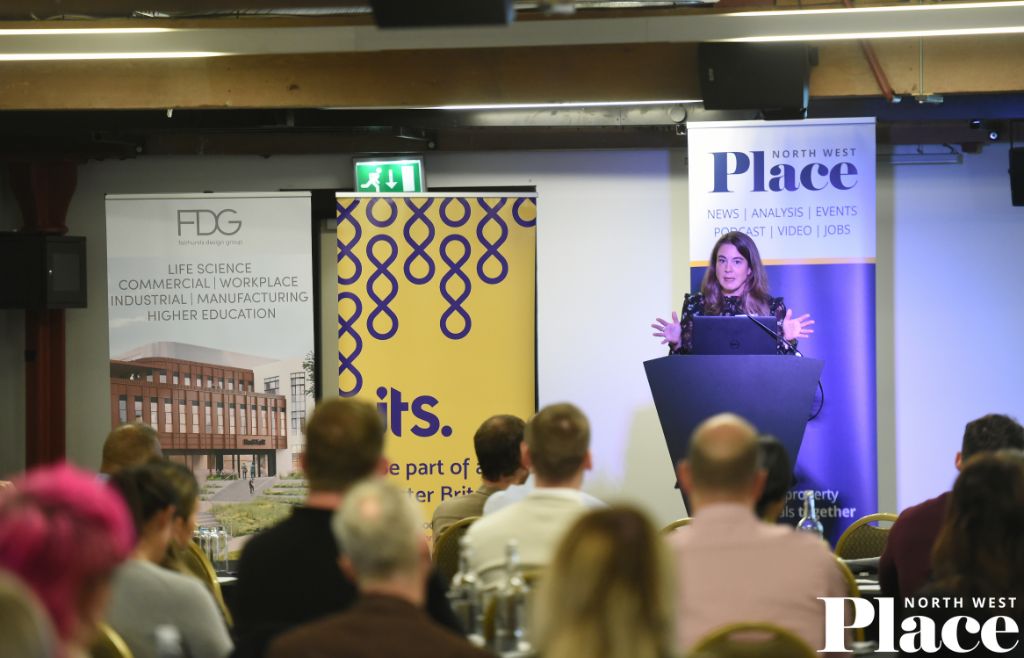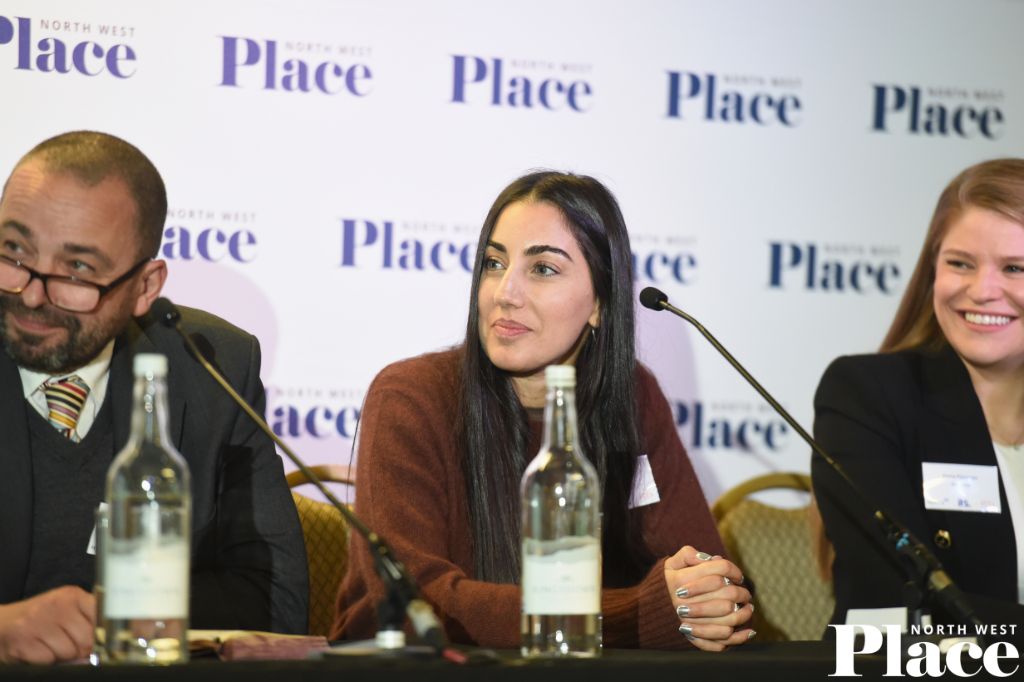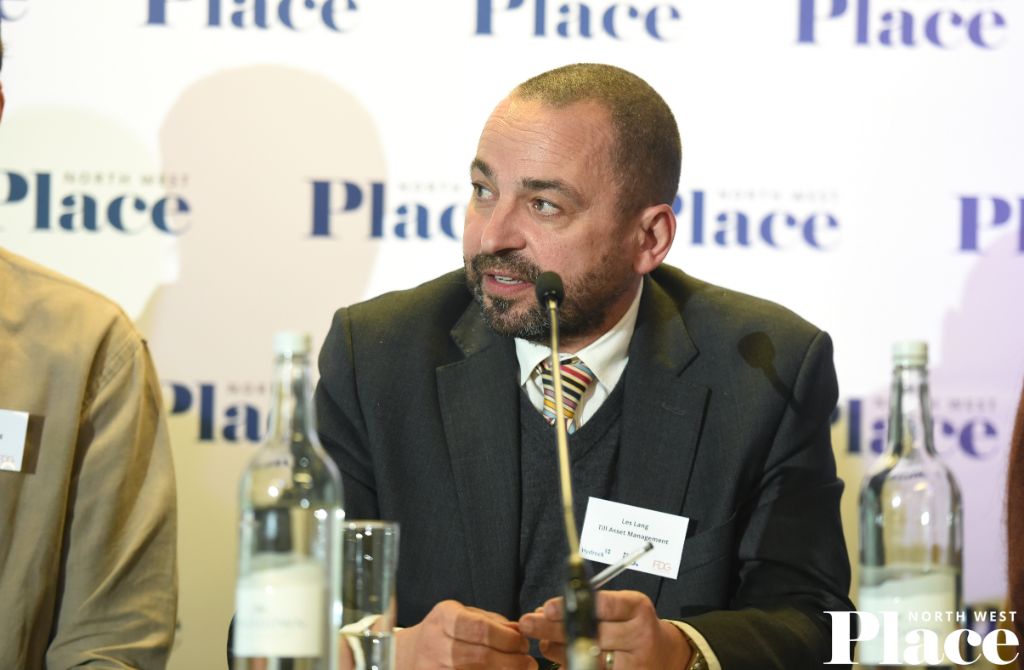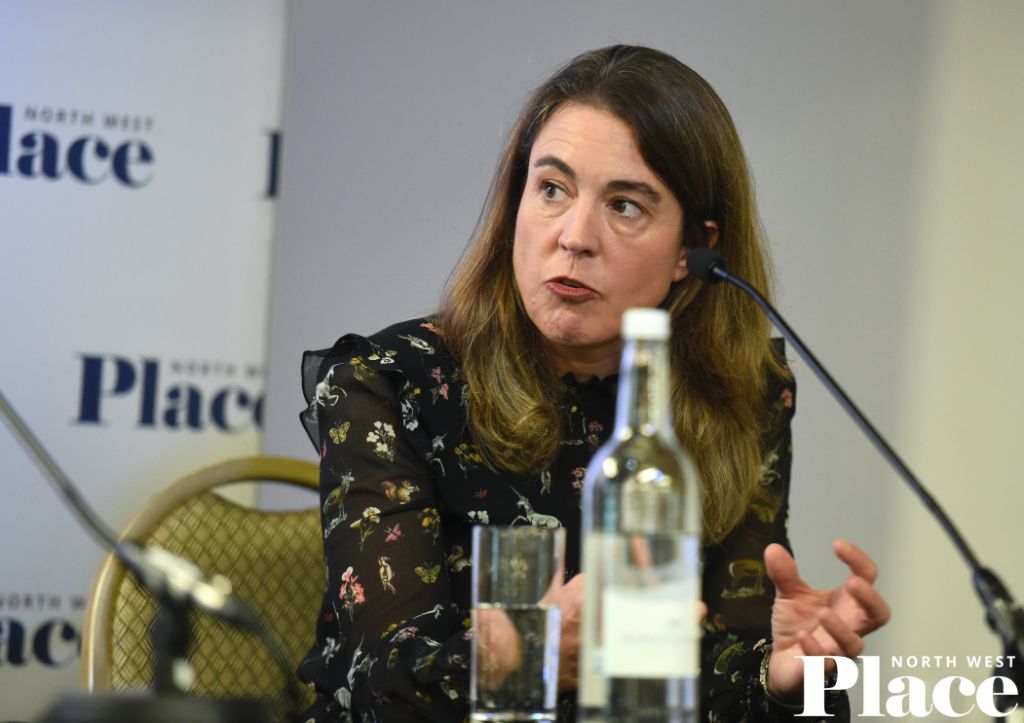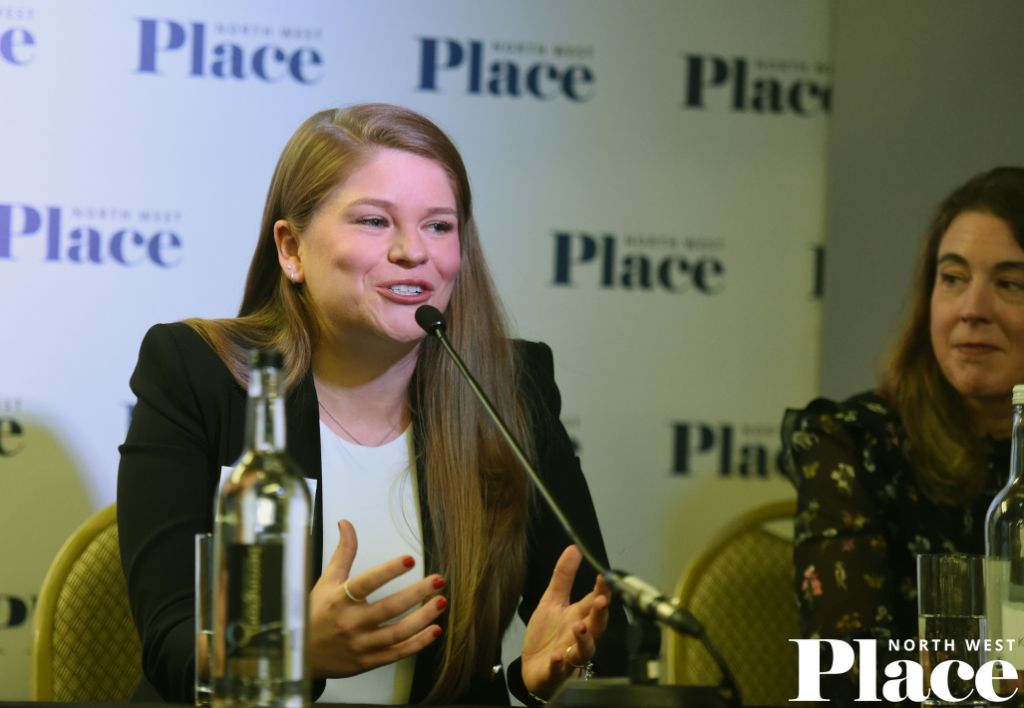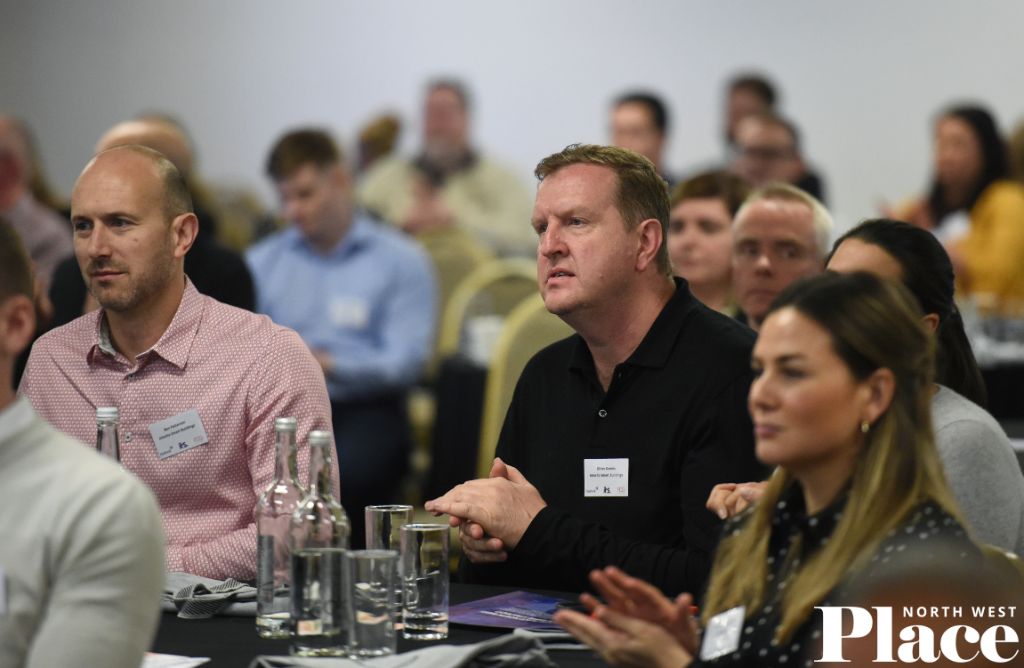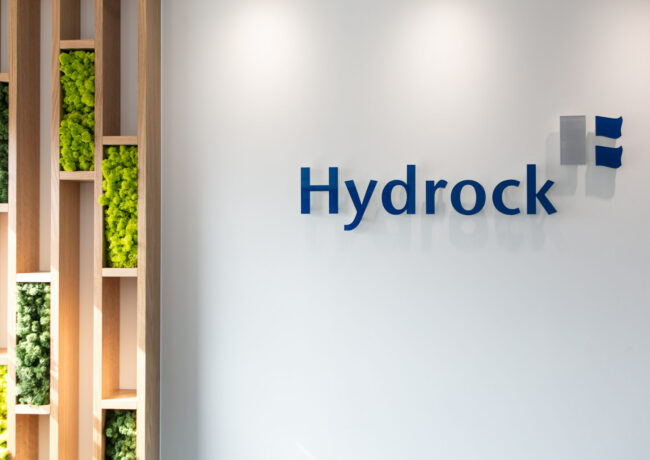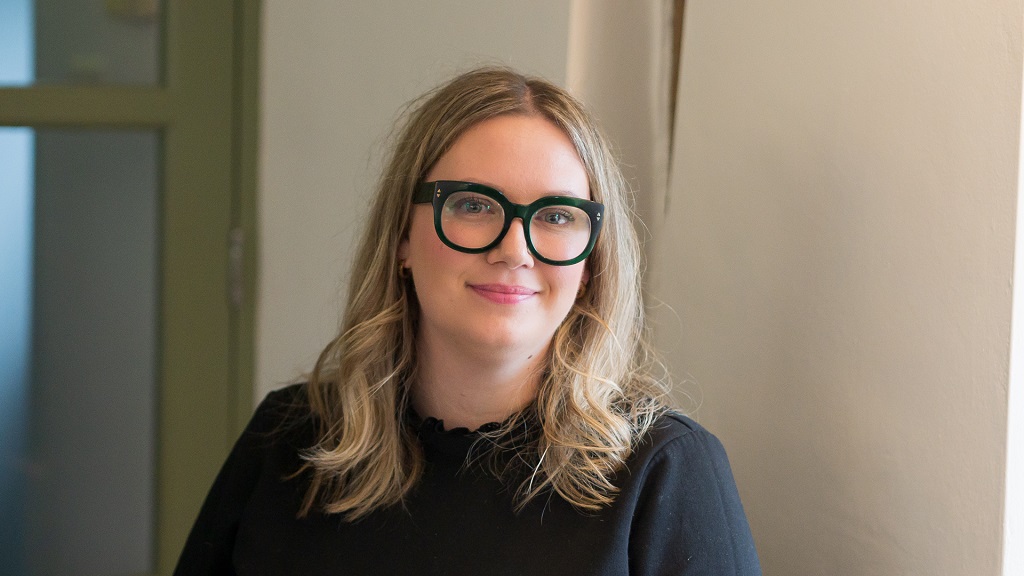Event Summary
Offices + Workspace Update | Photos and summary
Atmosphere versus amenity, the ever-changing desire for flexible space, and uncertainties around future occupier needs were just some of the points debated at the latest Place North West event.
Offices + Workspace Update saw experts discuss the forces reshaping the way we work and how property can support this.
The event took place at the Science and Industry Museum in Manchester on 20 October and was sponsored by Hydrock, ITS and Fairhursts Design Group.
Scroll down to see photos and slides from the event.
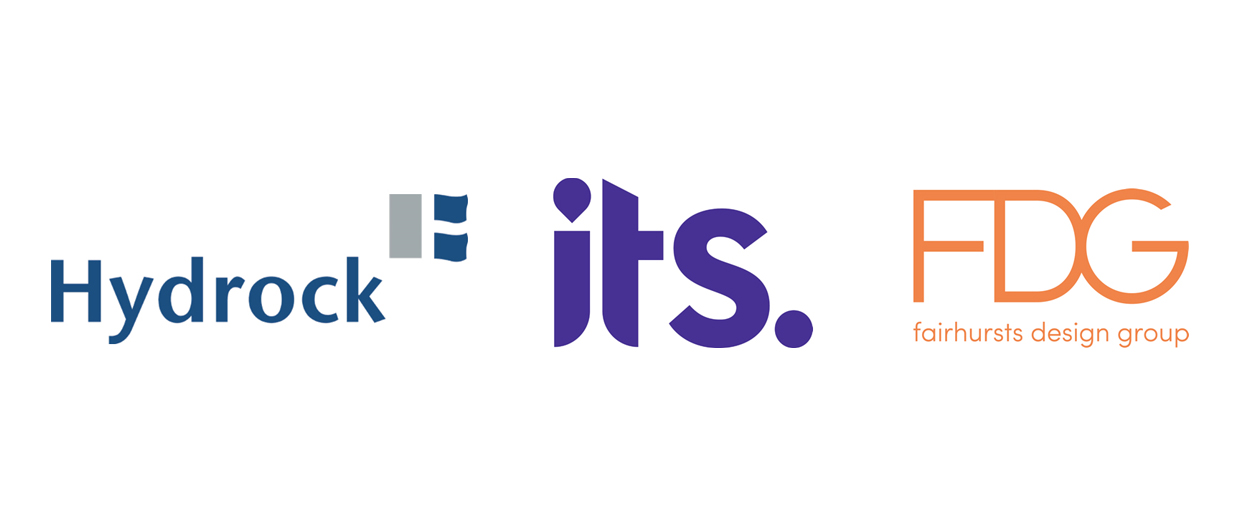
In a week of yet more political turmoil, it was fitting that Dominic Pozzoni, head of Manchester office and director of the national offices team at Colliers, observed in a presentation how changes seemed to be happening literally hour by hour.
He said the certainty was that occupiers were still very keen to get back in the workplace, albeit in different ways: “Chief executives are saying one thing – there’s an increased desire to get their employees back into the workplace. A recent survey demonstrates that perhaps employees have a slightly different agenda and are quite happy working in a more agile way.
“We’re talking to business decision-makers continually. And they, in turn, are looking at their current office space and saying the most important functions are talent, technology, transformation, and sustainability. Of course, they’ve got to take into account the current economic climate – interest rates, inflation and everything that goes with that. Do they increase or decrease the floor space, consider headcounts, and hybrid working from home?
“It’s no longer just looking at an individual office building and what that provides. It’s the place, the culture, the neighbourhood, the community amenities. All these components are something we’re seeing far more now.”
Pozzoni said that pre-Covid, the average annual take-up in the city centre was 1.35m sq ft per year. In 2020, that dropped off to 800,000 sq ft. In 2021, it came back to just over 1m sq ft. He added: “Manchester has remained very resilient in comparison in terms of that take-up and still seems to be the number one UK city for occupational demand outside London.”
And he warned delegates to keep a strong eye on ESG as this would dominate in the coming years: “The whole green process in terms of green leases, green clauses, recycling, energy, sustainability, performance – all of these components have been fast-tracked.”
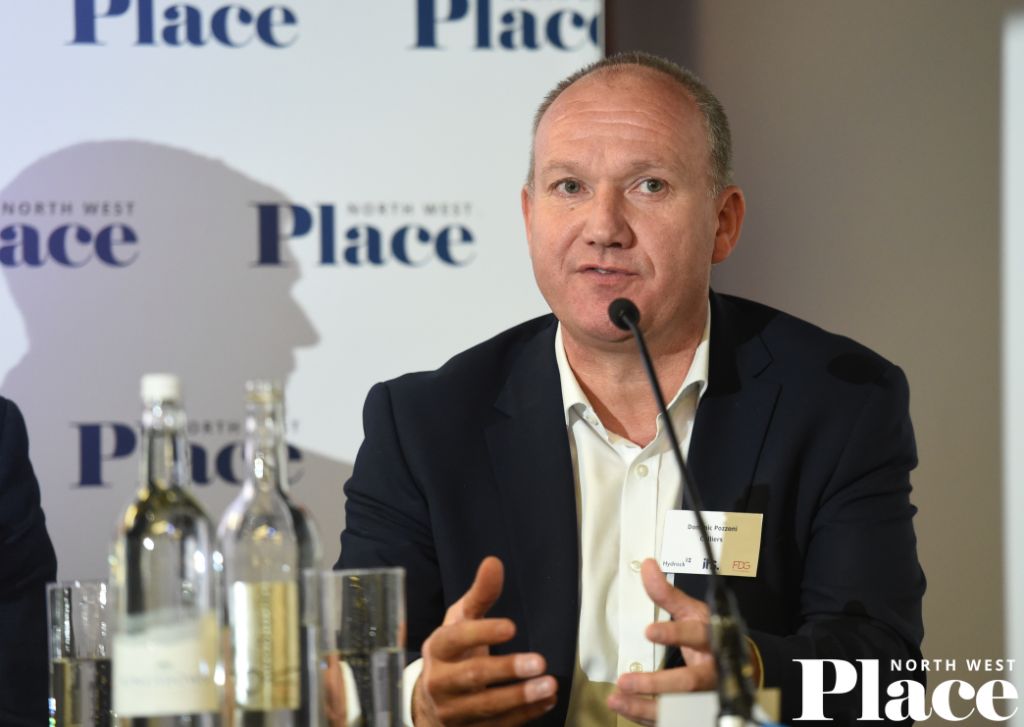
Dominic Pozzoni is director of the national offices team at Colliers. Credit: PNW
Encouraging talent
Julia Hatmaker, deputy editor of Place North West, kicked off the panel discussion with a question about what is the most important criteria for the office of today.
Dave Ferry, head of enterprise sales at ITS, said the recent experience of an office move had taught him numerous things. “We thought about how people would use the space, and made sure we had the technology so people could work from home, dial into meetings, and included things like digital whiteboards, all of that kind of kit, and created a really nice environment. One thing most businesses lost through the pandemic was the ability to onboard new people and have them learn by osmosis.
“We’ve really seen an increase in how quickly we can bring people to competency having everybody back in the office.”
Jessica Bowles, director of strategic partnerships and impact at Bruntwood, agreed: “It’s also about retention of talent. Talent is key. Business leaders want to improve it [the office environment] because they’ll be mindful that employment rates are what they are at the moment [lower than usual].”
Dan Hyde, development director at MEPC, said: “What we’re doing is providing an experience, so that there’s something to do before, during and after work that is worth [commuting] for. You are maximising your day and benefiting from being in an environment where you’re collaborating with your colleagues. The wider neighbourhood is key to retaining and attracting that quality talent.”
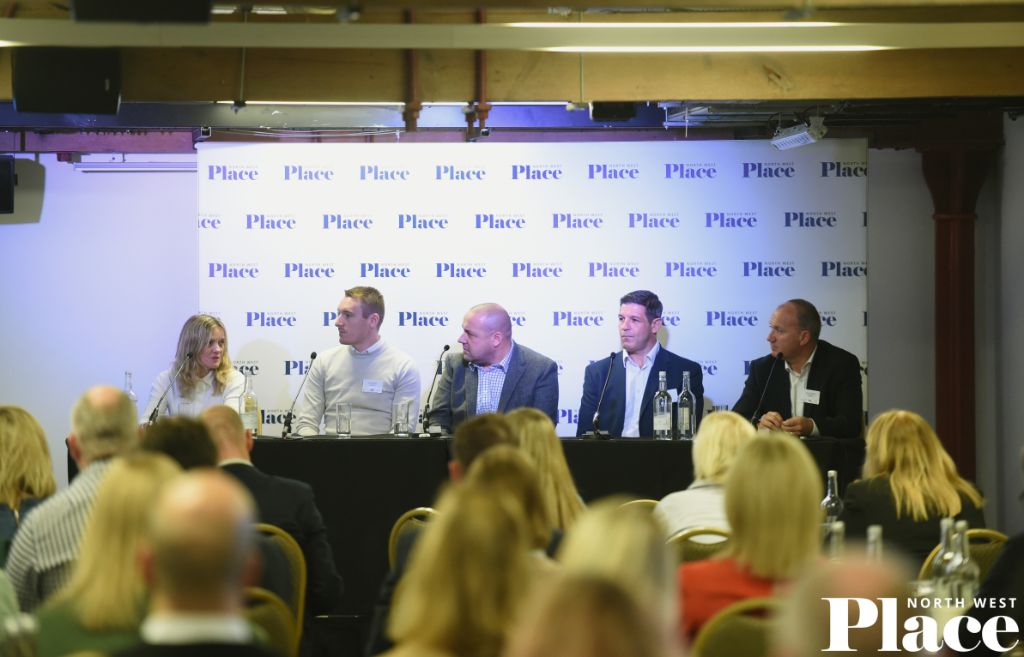
From left: Bruntwood’s Jessica Bowles; Hydrock’s James Barker; ITS’s Dave Ferry; MEPC’s Dan Hyde; Colliers’ Dominic Pozzoni. Credit: PNW
Sustainability is key
Pozzoni said his team were going into junior schools to speak to children about their priorities: “We are looking at where they are now and what environment they want when they come out of school, university – wherever they may be. Younger people are now far more focused on sustainability and the importance of that. It’s really important to go with that change and see it implemented into office space.”
Hyde added: “New starters are very savvy now, very aware of sustainability, and might decide that that isn’t the kind of building they want to work out of.”
Bowles said: “I think the interesting question will be how do we get really real about the S, as well as the E [nvironment]? How we make these buildings work for the communities they’re in, in their construction, but also in their operation.”
Asked if sustainability could translate into higher rents, James Barker, principal energy and sustainability consultant at Hydrock, said: “Yes, that’s what’s pushing them to go the extra mile. They know if they get a better BREEAM rating it equals a higher rent per square metre.”
Using the space
Ensuring total flexibility on space usage was a strong topic, with discussions about on-site childcare, inclusivity and accessibility. Hyde gave the example of a former retail unit his company is providing as flexible amenity space. “That can be a spinning studio,” he said, “then you could wheel away all the spin bikes and bring out the chairs, it becomes a kind of presentation, TED Talk-style space. Similarly, with a smaller unit, it can be pilates or yoga. That gets put away and it can be a boardroom or fine dining. That’s a free amenity for the building.”
Barker said consultation with teams was crucial: “Even the main contractor. We say what we want from the space and really put our stamp on it. I think as much as people are saying they want you back in the office, there are just as many people that are saying we’re happy for you to work from home.”
“Of course, that’s going to be dictated by productivity and revenue in due course,” added Pozzoni.
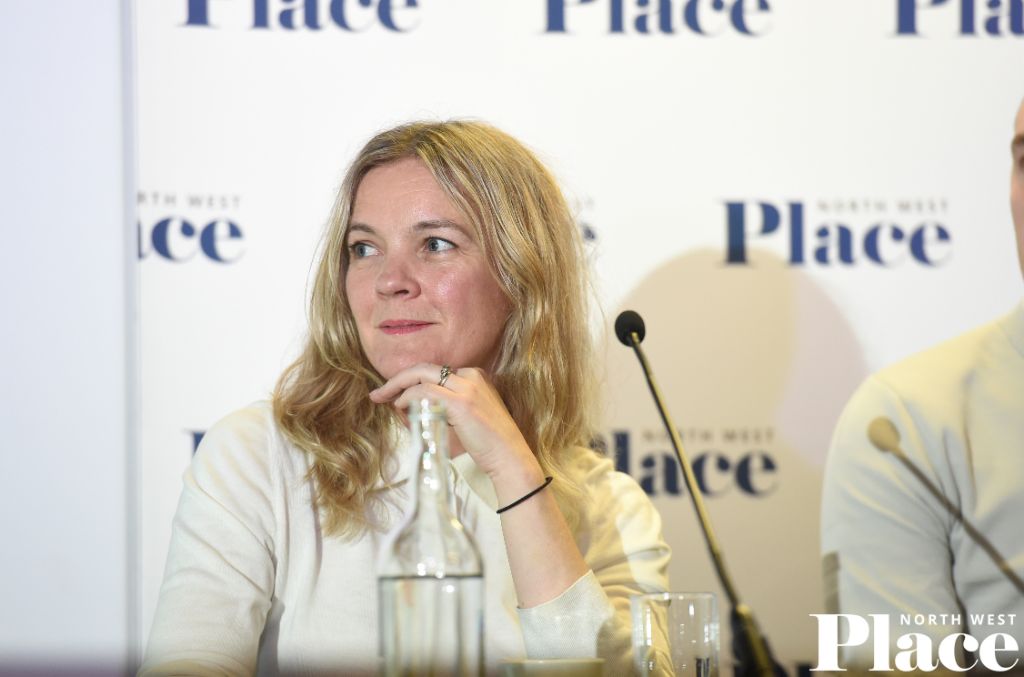
It’s all about retention of talent, said Bruntwood’s Jessica Bowles. Credit: PNW
Creating a culture of creativity
Bowles said: “Unleashing the creativity and competitiveness of developers can only be a good thing if we get increasing numbers of really high-quality, ambitious, exciting buildings in the city because that attracts people to the market, and it keeps Manchester on the map as a global city. I think that direction of travel is a really exciting one. You don’t want a load of vanilla spaces and a vanilla city.”
That creativity also extends to the use of technology. Hyde said: “Being smart-enabled is a massive plus. You’ll be able to sit at a desk and alter the ambience and the light or the heating, or report problems, and order stuff to your desk. On the flip side, we’ll be able to run the buildings really, really efficiently and give real-time information in terms of air quality and energy usage back to the back to the occupiers. Smart enablement is here to stay in next-generation buildings.”
Ferry added: “It’s important that internet connectivity is made available as early as possible. You need to know when people dial into a meeting that the connectivity is capable of coping with it.”
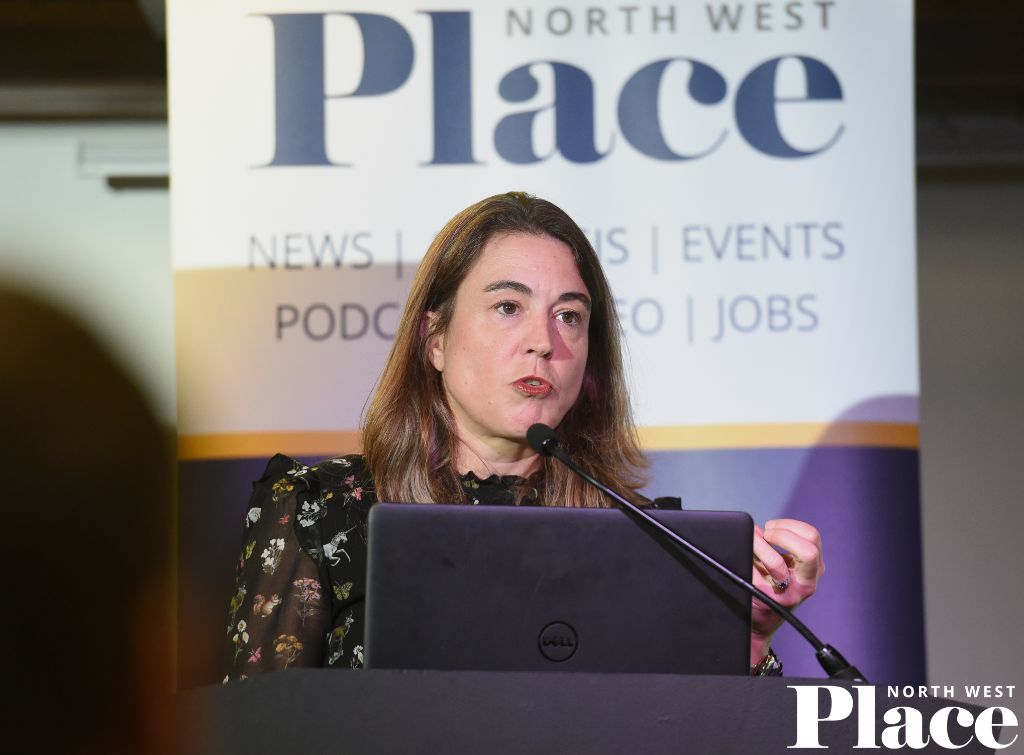
Businesses want to be able to stamp their own mark on an office, said Cushman & Wakefield’s Emma Swinnerton. Credit: PNW
Personal space
During the event’s second presentation, Emma Swinnerton, international partner and head of flexible workspace at Cushman & Wakefield, said one area of growth is definitely going to be managed space – but landlords need to get the deal right. She said: “Businesses want their own front door, they want to be able to stamp their brand and personality on that space, but they want it to be easier to take that space. They don’t want to worry about 40-page leases or wayleave agreements or fit-out contracts.”
She also highlighted a survey her company had carried out across Europe, the US and the Asia Pacific. 53% of those surveyed said they’re looking to increase their use of flexible workspace – and broaden their portfolio in terms of location. She added: “It’s giving employees access to space that is closer to their homes and their communities. They were doing this previously, but the pandemic has accelerated the move in this direction.
“We’re seeing a growth in occupiers wanting to take space on a core and flex basis. They are asking what the flexible workspace is going to be in the building, enabling them to flex up or down depending on specific projects or specific growth needs.”
Finding new uses for older buildings is also coming to the fore. Swinnerton added: “There’s been quite a lot of talk about repurposing other types of space, the obvious one being retail which has suffered over the last few years. There are some challenges in converting retail space to flex space, primarily the access to natural light and they don’t lend themselves well to being subdivided into smaller spaces for people to sit in the whole day.”
She concluded: “Definitely the market is changing and, clearly, there’s a lot of concern about forthcoming economic challenges, but uncertainty drives the need for more flexibility so I think the future is bright for the sector.”
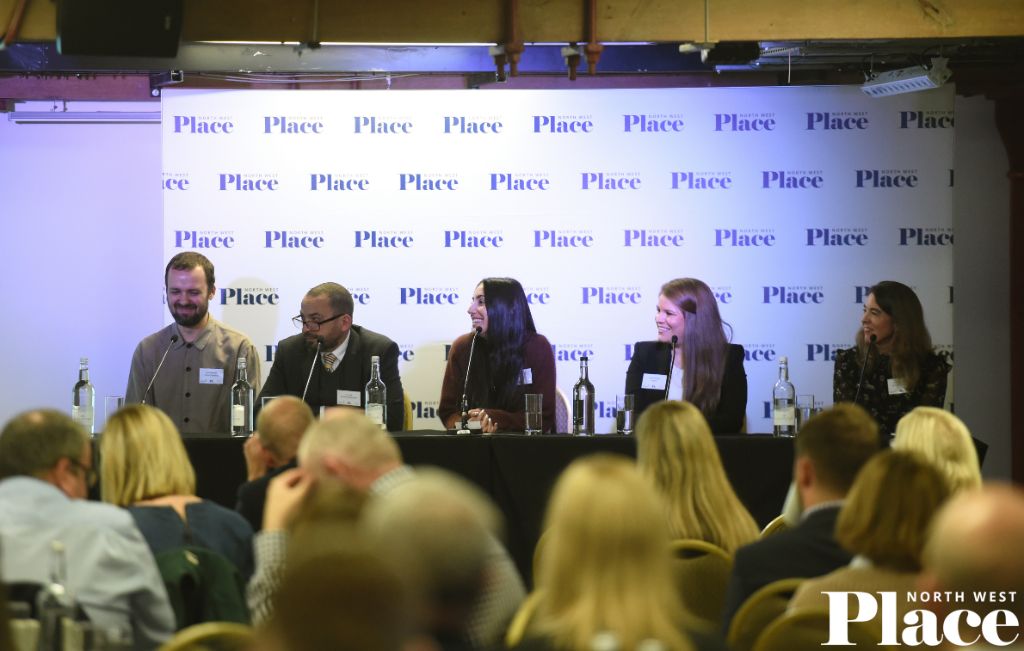
From left: Colony’s Alex Campbell; Till Asset Management’s Les Lang; Huckletree’s Gabriela Hersham; Deloitte’s Fiona Flanagan; Cushman & Wakefield’s Emma Swinnerton. Credit: PNW
The drawbacks of flexible workspace
Alex Campbell, co-founder & head of product at Colony Coworking, said: “I think from an operator’s point of view the biggest drawback is the lack of long-term security. Managing churn is the job of the operator, but the easier it is for businesses to move around, either within your portfolio or away from your portfolio, [the better].”
Gabriela Hersham, chief executive and co-founder of Huckletree, added: “I think sometimes businesses want to be able to manage their employee experience in their own way – not just putting their branding on the wall, but with the entire journey of amenities and facilities and the experience throughout the day. Sometimes that is challenging within flexible workspace.”
Fiona Flanagan, real assets advisory consultant at Deloitte, agreed: “The experience is such an important factor. If one of those elements isn’t quite right, I think the model’s effectiveness can present a bit of a drawback for the user.”
Les Lang, partner at Till Asset Management, said more thought is needed to go into flex space fit-outs: “In any growing market, what happens is that a lot of people go into that sector. I think there’s so much focus on things like community and networking and what something looks like. I’ve seen new entrants into the market but also established companies where you have meeting rooms and the dividers stop at the suspended ceiling. So, you go into a meeting room and you can hear every word from next door.
“I’ve seen others where there’s been a fit-out by a landlord, and then a flex operator comes and does the other bit to divide it up – you look at the densities and you look at the air conditioning, there is no way that those people have got the right environment. There are a lot of flexible working centres out there which, in my opinion, aren’t fit for purpose.”
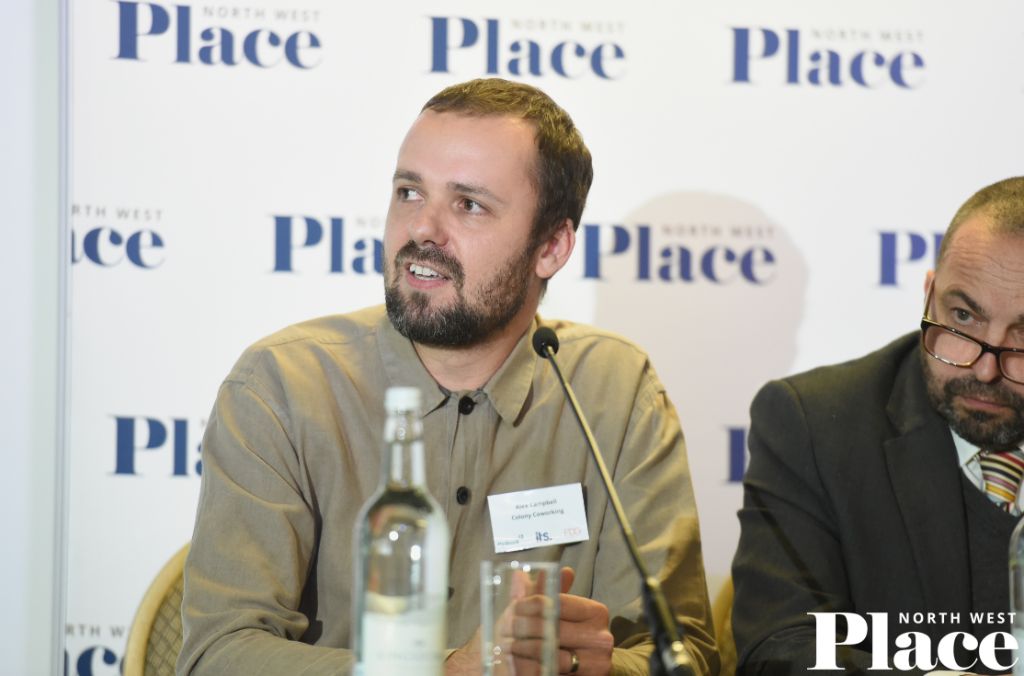
Alex Campbell, co-founder of Colony Coworking, said one drawback of flex workspace is lack of financial security. Credit: PNW
Better amenities
Hersham said the demand for hospitality in the workspace had become akin to hotels and members’ clubs. She added: “The pandemic is forcing us to improve the quality of our offering and our services by uplifting, going back to basics, really thinking through the entire journey, and that every element of the space is user-friendly.”
Swinnerton said: “I think the UK is one of the most crowded marketplaces for flexible workspace operators. Everyone was trying to develop their own niche to differentiate and gimmicks was one of the ways of doing that. Now, either the gimmicks have gone or the operators have gone, because it’s just not commercial.
“When you see massive sleep pods taking up a space, or maker spaces with 3D printers, and all of this kit that costs a lot of money, that’s empty, because no one’s actually using it. Everyone likes a good-looking fit-out, but you can’t pin your hat on that.”
Measurables
When asked how the impact of things like events and amenities could be assessed, Hersham said: “The only way you can measure that in real terms is by measuring churn. When someone gets to the end of their short-term lease, are they banging the door down to sign another?”
Flanagan added: “We’ve enjoyed the amenities in the variety of different flex workspaces we’ve used throughout the UK to the point where we are feeding that back to the suppliers we’re working with, but also taking lessons learned and using them. What we’re finding at Deloitte is that we want the office and our flex workspaces to provide facilitation of natural conversations and over-the-shoulder learning.”
Lang said: “If you get your amenities right, then you can help foster community though there is an issue, which is the relationship between the amount of space that you have, and the amount of amenities that you can provide. I think people have just got to be very careful of buzzwords. Great community is not measurable.”

Every element of a coworking space must be user-friendly, said Huckletree’s Gabriela Hersham. Credit: PNW
Booths and rooms
From phone booths to Zoom rooms, occupiers are asking for bespoke fittings to suit their business, but they’re not without their problems. Flanagan said: “If you’re coming into the office to sit in a phone booth all day, is that really a productive use of your time? And if one person is sitting in there for hours, then no one else can benefit. That is a genuine problem.”
Changing times
Lang said: “I think the combination of coming out of Covid and Brexit, a whole number of people who used to be in this country have gone elsewhere. As a result of that, we’ve had a very healthy job market. But if you start to worry about your job, it’s a good time to be seen in the office. What that tells me is if the balance between the number of people who are looking for a job, and the number of vacancies begins to change, are we going to see some of these things rolling back?
“The answer is, I don’t know but, regardless, the quality of the offer is going to continue to be important.”
Inside out and upside down
Is landscaping important for flex office spaces, and what should you put on the ground floor? Campbell said: “Wherever there is space to allow an outdoor space, we will. There are challenges in the city centre, obviously. It’s important. People should be able to get a breath of fresh air, step out of the office. It’s a great part of the day if you can get outside for 10 minutes, take a phone call outside. It’s a great amenity to have.”
Swinnerton added: “When you’re looking at a large building, it makes sense to put a flexible workspace at the bottom of the building rather than the top. It simplifies the arrival experience and it’s animating the building. Often those spaces tend to be cheaper and you can save premium space for those tenants that are going to take that on a traditional lease. That may or may not lead to there being access to external space.”
The flex sector’s biggest opportunities
Campbell said: “From an operator’s point of view, it’s the opportunity to learn lessons fast. It’s such a fast-paced industry.”
Lang said: “New technology. Virtual reality studios and podcasts studios, some video interview rooms. That is a big opportunity.”
Flanagan added: “It’s about all the different entrants coming into the market, really communicating what their USP is, and accommodating the small startups right up to large corporates.”
The next Place North West conference is Merseyside Development Update, which is being held on 10 November at the Spine in Liverpool. Tickets for this in-person event are currently available. For those interested in seeing more coworking spaces, Place North West is coordinating the launch of Serendipity Labs in Salford on 17 November. Those who wish to attend this free event must register their interest.
Click on any image to launch the gallery
- Credit: PNW
- Credit: PNW


